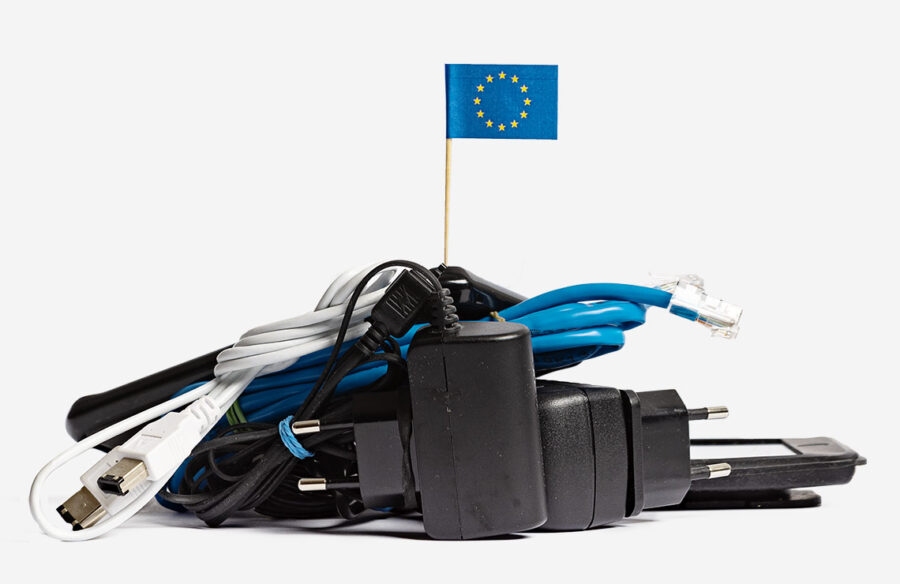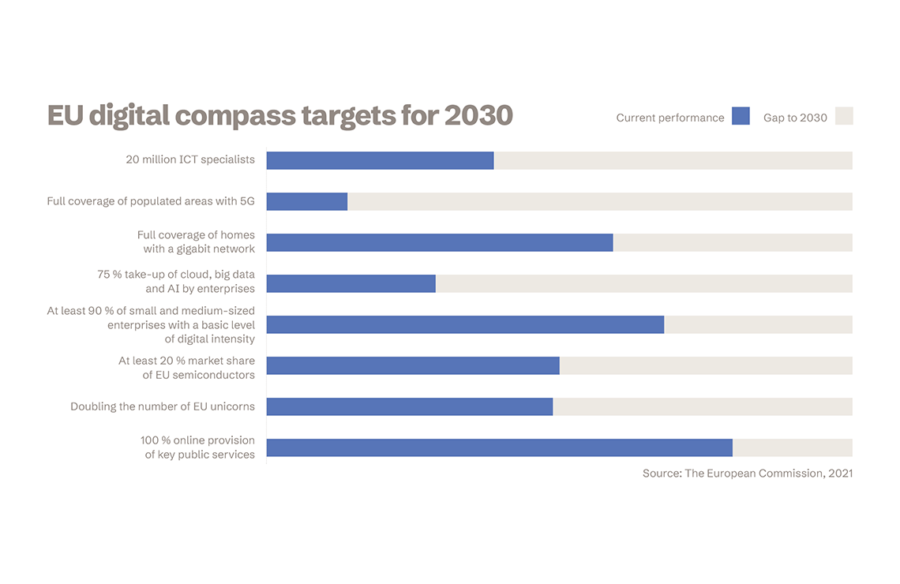A bold change to meet our users needs

A bold change to meet our users needs
Schibsted Nordic Marketplaces is starting a journey to meet the need for more specialised services. At the heart of the change is the ambition to be a force for positive change – for both society and the planet. Christian Printzell Halvorsen is leading this journey, knowing that the greatest risk is not daring to change.
I joined Schibsted in 2007, mostly because of the people. I loved the engagement and energy you get when you bring together journalists, engineers, product and salespeople.
I was also inspired by the bold decisions that Schibsted’s management dared to take. After all, our history is one of bold moves, often in difficult times. Just think about it: We set up FINN in 2000 to compete against our own newspapers. We bought Blocket a few years later and rolled it out across the globe, to 36 countries, knowing most would fail, but betting that some, like Le Bon Coin in France, would become incredible successes. Sometimes, you must dare to fail in order to succeed.
Today, we know that this fearlessness paid off. In 2019, we spun off our international marketplaces, creating the company Adevinta – which in 2020, bought eBay Classifieds, concluding the transformation from a newspaper company to the world’s largest online classifieds operator.
Now we’re taking a similarly bold step for our Nordic marketplaces, setting up for the next decade while daring to challenge our success formula for the last 20+ years. We are setting the verticals free and using the combined strength of our Nordic organisations in a whole new way – all to provide our users with the best possible service in each category.
Users are demanding more
Things were relatively easy for us in the “classifieds days”, when marketplaces were all about ads and an ad was an ad regardless of what you were selling.
Now users and customers are demanding more and more sophisticated solutions. This gives rise to the specialists, the companies that create beautiful user experiences by investing deeply into solving a very specific problem and then scale the solution across countries.
Marketplaces are also changing and moving towards so-called “next-generation models” which solve more of the users’ needs, like payments, shipping, insurance and financing. As we move in this direction, Schibsted’s marketplaces must also become specialists. The way you sell a t-shirt is very different from the way you sell a house, and obviously this requires very different solutions. But the way you sell a t-shirt is not that different country-to-country.
We must set our verticals free
In essence, our different categories or what we call verticals, i.e., Mobility, Real Estate, Jobs and Recommerce, are becoming more important dimensions. So, we asked ourselves: If we worked together across the Nordics, what could we achieve within each vertical that any one country alone couldn’t? What if we dedicated four times the resources to each initiative instead of duplicating our effort four times across countries?
The conclusion is clear. We must set our verticals free and let each of them evolve more freely on their own terms to reach their full potential. By taking a Nordic perspective, we can think bigger and be bolder in how we solve users’ and customers’ problems.
We also want to be a force for positive change in society and for our planet. We call it our burning ambition. It defines our purpose and what we want to achieve in the long-term. It is our joint mission for all our marketplaces, built on Schibsted’s common strategic platform: Schibsted Future State.
We will make the sustainable alternative the obvious choice.
Because every action we take today impacts whether our children and grandchildren will have the opportunity to live in a sustainable world.
By doing so, we will increase our positive impact on society and the planet by more than ten times before 2035. We mean “sustainable” in the broader sense of the word. We will obviously contribute to the green transition by driving towards circular consumption, but we also strive to create equal opportunities and a more diverse society.
Empowering smart choices
Imagine a world where it’s so easy to make the right choice that you don’t even think about it. A world where it’s second nature for users and customers to make sustainable choices. We truly believe that we can make a difference by empowering people to make smart choices for themselves and future generations.
By offering people services that help them improve their lives and create financial opportunities, while being good for society, so that they will be able to take future-proof actions.
Because every action we take today impacts whether our children and grandchildren will have the opportunity to live in a sustainable world.
Having been in this business for a long time, I sometimes joke and say I have dedicated my life to ads for t-shirts and used cars, but we are so much more than that. As a salesperson working in one of our marketplaces, you may think you’re simply selling advertising solutions. As an engineer, you may think your job is to write code. And if you work in customer service, you may think your purpose is to solve problems. But whatever your role in Schibsted Nordic Marketplaces is, you are part of our shared mission to make the sustainable alternative the obvious choice.
We need to operate differently
Knowing what we can achieve is one thing. Actually doing it is something else. We have realised that we have to operate very differently to achieve this new, great ambition. To set our verticals free to evolve more independently, we must think differently around both technology and organisation.
For the last 20+ years, our success formula has been local brands with local organisations and local technology platforms, where the solutions for the different verticals have been highly intertwined.
To let each vertical develop independently, we would have to break the dependencies between them. A person working in real estate shouldn’t have to rely on or coordinate with someone in mobility. And that means the technology solutions for each vertical must be separate.
A cross-Nordic view
At the same time, if how you sell a t-shirt is similar across countries, we should be able to use that same technology solution across countries. And similarly for mobility, real estate and jobs. That, however, requires us to have a cross-Nordic view within each vertical to decide which common solutions and business models to deploy.
Finally, while we want as much vertical independence as possible, we share certain assets across verticals, like the valuable and loved FINN, Blocket, Tori, Oikotie, DBA and Bilbasen brands. We also need to create strong areas of expertise to attract, develop and retain talent in sales, tech and marketing, for example.
In conclusion, we have decided to move to a matrix organisation with cross-Nordic verticals as the driving force, supported by functions. Similarly, we are moving towards a technology platform where we separate the solutions for each vertical, but where we use the same solution across countries.
Being aware of and learning from our history has made one thing extremely clear. Our people are our most important competitive advantage.
This is a fundamental change from how we have successfully operated for more than 20 years. It’s a massive change project with inherent risks both technically and with regards to people and market positions. A natural question to ask is: “are the risks too high?” We have taken the opposite view. Staying the same while the world around us is changing is perhaps even riskier.
Most importantly, a successful transformation will set us up for the next decade, enabling us to deliver better solutions to consumers and professional customers – and to society.
Our people the most important advantage
Being aware of and learning from our history has made one thing extremely clear. Our people are our most important competitive advantage – well over 1,000 people across the Nordics with exceptional knowledge about marketplaces and deep insight into our markets. To succeed we must create an even more attractive future for them, one where they can succeed and have more
impact than today. If we are able to engage our people in finding the best solutions, the other risks will be manageable. That’s why we have put people at the front and centre of the transformation.
We have just started this journey, so the outcome is not guaranteed. But we do think our approach is reinforcing everything that we are proud of today – our people and cultures, our brands, our financial results, and more than ever, our impact on society.
Read more
A historic disruption in mobility
Read more
A separate hub will dare to challenge

Christian Printzell Halvorsen
EVP Nordic Marketplaces, Distribution and eCommerce
Years in Schibsted: 15
A historic disruption in mobility
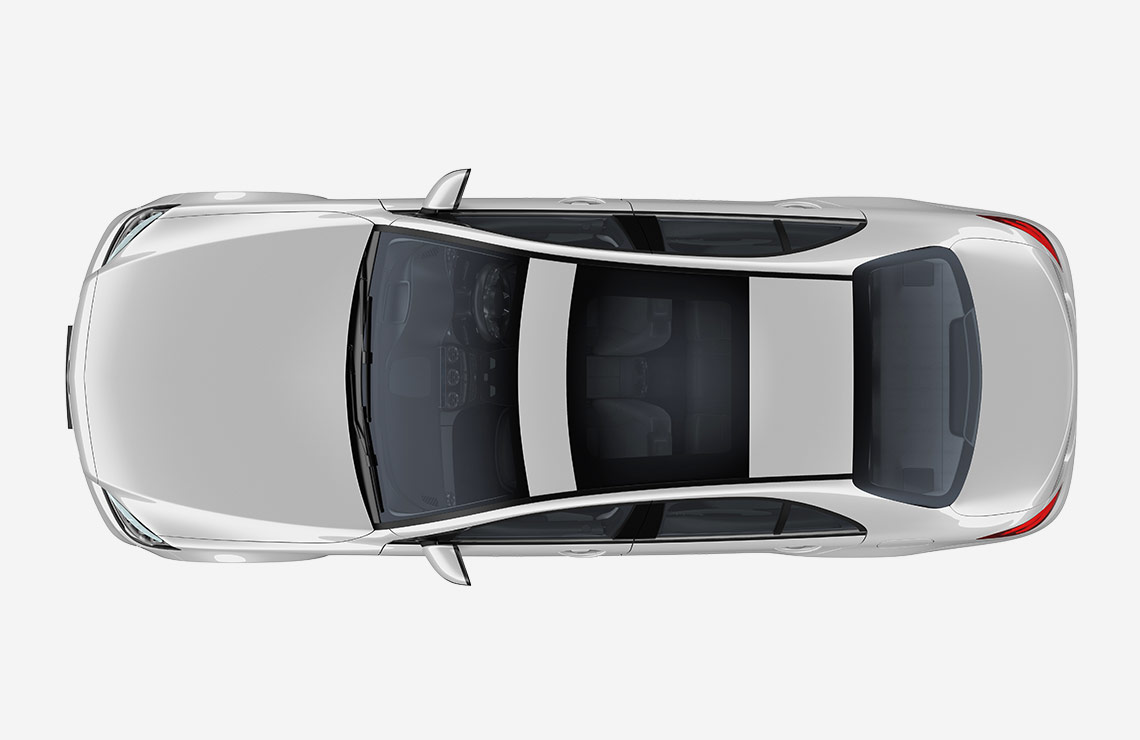
A historic disruption in mobility - and the Nordics are leading the way
The car is perhaps the category within Schibsted Marketplaces that is changing the most, and it’s happening fast. The Schibsted moblity team takes us through the major trends behind the change.
After talking about the electrification of the global car fleet for more than a decade, we are finally seeing it happen. And the Nordic markets are leading the way. In Norway alone, 65% of all new cars sold in 2021 were electric (compared to 17% in Europe) and the other Nordic countries are rapidly catching up.
New consumer needs and behaviours have prompted car manufacturers to digitalise their user journeys, thus side-lining the professional car dealers to a greater extent with an “agency model”. In the future, the purchase process will be digital, taking place online and offering frictionless services and subscriptions to consumers. The Nordics are among the top five countries in Europe in terms of willingness to buy cars online.
This shift is causing several ripple effects, including these five impactful, underlying trends:
1. Car dealerships consolidate
Future consumers expect and demand a digital relationship to the car industry, both in relation to car buying as well as access to mobility. For the professional car dealers, this is a golden opportunity to move online and harvest the results of a transactional buying process – including reduced costs and increased revenue per sale. To remain relevant, dealers will need to invest heavily in new technology. The industry’s landscape is changing dramatically, and the winners are the players who offer the best holistic digital buying experiences, as well as new services for alternative car ownership models.
2. Car e-commerce reaches new heights
The digital maturity and expectations from both consumers and professional customers are increasing at an accelerated rate. And cars are no exemption. The market for digital car buying is expected to grow to NOK 9 billion in 2026, as the online share of used car sales increases. While both internal combustion engine cars and electric vehicles (EV) transactions will migrate online going forward, EVs are especially well positioned for digital car buying, as these models are not tied to the same legacy business models.
3. Consumers strive to eliminate pain-points
Car sales have begun to shift from consumer-to-consumer to consumer-to-dealer (or C2B in business lingo) at an increasing rate, as a growing number of consumers are willing to pay for convenience and want to eliminate the pain points of selling directly to another consumer. According to Schibsted Nordic Marketplaces projections, around 15% of the overall car flow from consumer-to-consumer sales is expected to convert to C2B sales by 2026.
4. The rise of new ownership models
Today we see the rise of new ownership models. The growing sustainability considerations among consumers, coupled with the global production halt of new cars, has pushed even more people to consider “access” versus “ownership” when it comes to their mobility needs. The leasing market is expected to grow in the coming years and key players are quickly moving to consolidate. And the same goes for car subscriptions. Already today, between 18% and 30% of Nordic car customers have considered, to some extent, accessing a car through a subscription model.
5. Content is king (or queen)
Cars are extraordinarily complex consumer goods and when viewed in combination with the electrification boom, that complexity is multiplied. Range anxiety, charging speed, home and away charging are a few of the new concepts to which consumers are adapting, and as a result, the use of online information during the purchase process is increasing.
Today, over 90% of Nordic car buyers go online in connection with a car purchase, according to Schibsted’s 2022 Nordic Car Buyer Study. A huge trend, or perhaps better phrased as an opportunity, that spans all the mentioned trends above, is the doubling down on mobility content – content that guides, engages and inspires as we all navigate this historic market disruption.
Read more
A bold change to meet our users needs
Read more
A separate hub will dare to challenge
Understanding a world on fire

Understanding a world on fire
A war in Europe and polarised societies have set the world on fire and shaken democracies. As individuals, we have a whole new security situation to relate to. Malin Ekman, a US foreign correspondent, also reflects on the role the media have played in these new developments.
There was a time when many risks in our corner of the world felt so hypothetical, and many discussions so abstract, that it was easy to ask oneself: “When is something going to happen?”
That time has now passed. When Putin invaded Ukraine, we were confronted with the world’s destructive uncertainty, as if world history cracked down on us, taken our temperature, and heralded a ruthless, unstoppable future where nuclear threats could no longer be dismissed and where gas pipes could be blown up.
A ticking bomb
The last time I felt like that was on 9/11. I was 14 years old and on a family holiday in Phuket, my first trip outside Europe. We were staying in a basic apartment hotel. Mum turned on the TV set in the living room. Images of the planes colliding with the twin towers were shown over and over. I remember thinking that Thailand felt reassuringly distant, even though it seemed as if the whole world had been compressed into a ticking bomb.
That same feeling returned this spring.
My friend and colleague Per Bjurman from Aftonbladet says he intends to stand on his balcony on the 48th floor when the missiles come. If it happens, he says, we should be glad if we die; no one will survive such an apocalypse. He knows exactly how many minutes it takes for a nuclear warhead to reach Manhattan from Russia (30) and the destructive impact of a modern nuclear weapon (100 times greater than that of the Hiroshima bomb).
This says something not only about the neurotic nature of our friendship but also about the uncertainty the world is struggling to get accustomed to. It was Per who told me about the invasion. I was heading for Orlando on a plane with a lousy internet connection when I received his message: “Oh no, Russia’s attacking Kyiv now!”
It had seemed so unlikely only a few hours earlier. Friends back home sent messages to the effect of thank goodness Trump isn’t president when this happens, at least; there’s no telling how things would turn out then. In the United States I heard acquaintances and interview subjects say that if Trump had still been president, Putin might not have dared to invade.
Both are pushing America first
While both analyses have their merits, it’s important to remember that the geopolitical differences between Trump and Biden are relatively small. Both are pushing the “America first” message.
The US withdrawal from Afghanistan, initiated by Trump and implemented by Biden, demonstrated how seriously the US took that slogan. Afghans clung to aircraft wings out of fear of being left behind in a country where, every day, people were being stripped of the rights that had slowly being secured for them under US control. Everyone was asking themselves: “Is this what American foreign policy looks like?”
The war in Ukraine complicated the answer to this question. The US was not ready to intervene at the cost of a third world war, but nor was it prepared to stand by and leave a country being invaded by a world power to its own fate. It sent weapons and imposed sanctions and formed a united front with the other Western nations.
But even though it was unprecedented, some important perspectives were lost in the way the incident was reported.
The months come and go, and for those of us who don’t have to live under constant physical threat, the fear is cyclical. One move by Putin, and the sense of security is ripped away. One threat of nuclear weapons – be it direct or indirect – and the fear returns. The geopolitical situation is so alarming and at the same time so fascinating that it’s almost easy to forget the domestic political polarisation here in the US. That, too, is prompting legitimate fears about what type of world will emerge; a polarisation which in many ways is leaving its mark all over the world and is evoking fear and concern for where our world is headed.
The storming of the Capitol is a low watermark in contemporary US history. But even though it was unprecedented, some important perspectives were lost in the way the incident was reported, political parallels that help explain why it could happen.
Comparisons with the claims made by Hillary Clinton and parts of the Democratic Party establishment that Trump’s 2016 election win was illegitimate are often dismissed as unfair, but they are important for understanding the political dynamics at play.
Effecting faith in democracy
Hillary Clinton conceded the election without urging her supporters to storm the Congress and stop Trump, though she did dismiss her opponent as an “illegitimate president” and claimed “he knows” that he stole the election.
The accusations were put forward in more sophisticated ways and without directly or indirectly agitating violence, but still they have as much significance for the American people’s faith in their democracy as they do for the populist right wing’s argument of a corrupt elite throwing stones from glass houses.
It didn’t help that parts of the years-long reporting on Trump’s alleged collusion with the Kremlin – which won The New York Times and The Washington Post a joint Pulitzer Prize – proved to be based on idle rumour and false information. Or that Hillary Clinton helped fund the report from which much of that information came. This passed relatively unnoticed, but revelations about the news media’s shortcomings are important for understanding the resentment towards them and how they feed polarisation.
Many didn’t report
The social media platforms also play a key role. After allowing the spread of disinformation in the 2016 US presidential election, Facebook assumed an almost self-flagellating role in the 2020 election. In response to a request from the Biden campaign, it decided to actively suppress the story about the documents found on Joe Biden’s son Hunter Biden’s laptop; information which I had managed to have corroborated by a Facebook employee.
Several reputable media with high credibility in established circles chose not to report the story on the grounds that the information could not be verified. Others chose to dismiss it as disinformation; a precaution that wasn’t taken in the Pulitzer Prize-winning reporting on Russia.
It’s harder to discuss the undermining of trust to which we in the media – sometimes routinely – contribute.
As journalists, we have a responsibility to reflect on our own role in these developments. It’s easy to talk about the undermining of trust which Donald Trump inflicts on democracy by disqualifying election results, but it’s harder to discuss the undermining of trust to which we in the media – sometimes routinely – contribute. The tendency to demonise and alienate rather than to understand and examine is also a price we pay for democracy, because it plays a part in dividing and agitating people.
A crass political game
In a panel discussion I recently participated in at the Swedish consulate in New York, a woman in the audience asked me: “How is it possible that so many elected Republicans seem to be ignoring the storming of the Capitol, as if they couldn’t care less?” It’s a relevant question.
As well as having to do with crass political games – even Republicans who detest Trump need to have the support of his electoral base – the answer has to do with the resentment at how the storming was portrayed and in what proportion compared to other news items.
For those who seem to ignore the storming, it’s almost as bad or even worse that Democrats turned a blind eye when, in the wake of the murder of George Floyd in the summer of 2020, a radical left vandalised cities, tore down barricades and set fire to police vehicles. They even occupied entire blocks and forced the police out of their own buildings.
More at stake
Still answering that woman’s question: The hate for the other side runs so deep that we forgive our own side’s mistakes. It’s human nature and, at the same time, a form of combat psychology, a dynamic similar to that found in global conflicts. The drama playing out in the world is putting more at stake; the question is no longer: “When is something going to happen?”
For my own part, I find it hard to imagine that I won’t relive the claustrophobic fear I experienced in Phuket and on that plane to Orlando, the one that comes with the feeling that the world is spinning out of control. As an individual, that’s a private matter
I have to deal with myself. As a journalist, it’s something bigger. Our responsibility is to communicate what we see with curiosity and consequential neutrality, and to help our audience understand the world as it is rather than repeat how it is usually presented.

Malin Ekman
US Correspondent, SvD
Years in Schibsted: 13
Redefining our digital lives
Redefining our digital lives
The metaverse is a term that defines the optimism and hubris of the tech industry today. Will this utopic vision for the future of the internet usher us into brave new virtual worlds, or will it fall by the wayside as Meta’s last-ditch effort to save their business?
Few topics in the tech world are attracting such unbridled optimism and derisive scepticism as the metaverse, with, perhaps, the exception of NFTs. And this year, Meta and countless other tech companies have doubled down on reorienting their businesses towards building “the next chapter of the internet.” Around the world, executives and the consultants they hire took note, with one of McKinsey’s forecasts topping out at a staggering USD 5 trillion valuation for the metaverse by 2030.
Countless definitions
But what are we actually talking about when we refer to the metaverse? Countless definitions have been written this year, and they generally follow a similar recipe to this one offered by Gartner: the metaverse is a “persistent, immersive and all-encompassing joining of our physical and digital lives, bringing together work, entertainment, marketplaces and social spaces in one seamless experience.”
In practical terms, this definition relies heavily on rapidly improving extended reality (XR) technologies like virtual reality (VR), augmented reality (AR) and ambient computing (voice assistants and home automation).
While this definition may still be somewhat vague, the idea behind it isn’t new. The term itself was coined by Neal Stephenson in his 1992 novel Snow Crash. Stephenson describes a dystopian future in which the only escape from failed states and corporate warfare is to strap on a headset and dive into a three-dimensional digital world complete with personalised avatars, virtual real estate, transportation networks and nightclubs.

Epic Games’ Fortnite is a traditional computer game that has successfully integrated purchases of virtual goods.
A profound cultural impact
Stephenson’s concept builds on the cyberpunk traditions established in works like William Gibson’s novel Neuromancer, which popularised the term Cyberspace and imagined a virtual reality environment he called “the Matrix”. The cyberpunk genre of science-fiction has had profound cultural impact, not least of which is a long line of dystopian films, a surprising number of which star Keanu Reeves.
The people who read books like Snow Crash and Neuromancer as teenagers grew up to found global tech companies. But they focused on an escapist, tech-utopic vision of the metaverse, leaving aside the critique of unbridled capitalism and technocratic rule that defines the cyberpunk genre. While these contemporary visions of the metaverse should be viewed with healthy scepticism, they offer a profound reimagining of our digital lives and crystalise a vision for where current technological developments might lead.
Get to know Hanna Ek’s avatar – Hanna. The Schibsted Tech experiment Team created her in just a bit over 30 minutes. The original Hanna is part of the team.
The obvious starting point here is Meta. With Facebook losing daily users and facing increasing obstacles for their ad business due to privacy initiatives in Apple and Google’s mobile platforms, it’s no wonder that Meta is searching for new revenue streams and new ways of connecting to users. Mark Zuckerberg has famously tied the future of his business to a future augmented reality platform that he hopes will replace the mobile phone, breaking Meta’s reliance on the mobile giants for access to users.
A major milestone
The release of the Oculus Quest Pro, a pass-through VR/AR headset that allows for both full immersion and for virtual elements to be added to real environments, is a major milestone towards this vision. Meta hopes that one day we will all use improved versions of headsets like the Quest Pro to access Horizon, a virtual reality social network made up of virtual environments for socialising, entertainment and work.
The vision here is compelling. In one direction, VR technology lets us physically enter virtual worlds and create powerful experiences. Imagine history classes around the world taking place in virtual reconstructions of historic sites, or the higher levels of remote collaboration and social connection enabled by a true feeling of shared presence. Going the other way, AR technology allows us to pull virtual elements into our physical world, opening entirely new possibilities for fashion, art and education and augmenting everything from buying new furniture to sports analysis.

The potential of Meta’s new technology and platforms is as impressive as the lurching struggles the company has gone through as they try to realise this vision. Buggy experiences and unclear use cases have meant that most people who try Horizon don’t return to the platform after the first month. Furthermore, more than half of previous generation Quest VR headsets aren’t in use within six months of purchase. Most damning, perhaps, are the recently leaked memos from within Meta that suggest the teams building Horizon aren’t even using it themselves, instead they are preoccupied with making critical improvements to basic elements of the user experience.
Will the metaverse be a system of closed and proprietary platforms?
These struggles shouldn’t be confused with a condemnation of the visions of a metaverse that Meta and others put forward. Apple is reportedly getting ready to release their own VR/AR headset. While they remain tight-lipped, Apple is no doubt expected to produce high-end hardware complete with an accompanying closed platform and marketplace for apps and experiences.
In anticipation of an increased threat from Apple, Mark Zuckerberg has called this a “competition of philosophies and ideas”, where they believe that by doing everything themselves and tightly integrating that, they build a better consumer experience. Meta’s businesses, including Facebook and Instagram, rely on accessing the closed platforms controlled by Apple’s iOS and Google’s Android. Unsurprisingly, then, Meta has championed interoperability, co-founding the Metaverse Open Standards Group (Google is a member, while Apple is not) to develop mechanisms that let users seamlessly travel between different virtual worlds, complete with whatever virtual purchases they may have made.
Will the metaverse be a system of closed and proprietary platforms?
This push for open standards, as well as the sheer number of partner organisations participating, only highlights how pervasive and motivating the idea of the metaverse is in the tech world today. Each new investment and product is being evaluated in terms of how it relates to the metaverse.
Epic Games, the creator of Fortnite, is proving the role that game engines and graphics-focused companies have in building the metaverse. Epic’s Unreal Engine is being touted as one of the defining creative tools used in creating virtual worlds and virtual humans.
Crypto spurring virtual worlds
There is, of course, a role here for crypto as well. Virtual worlds built on blockchains have emerged in recent years, spurring a run on virtual real estate and playing host to massive exhibitions of NFT art.
It’s a star that shines so bright that long-standing investments by established tech players also are being recast as bets on the metaverse. After the seeming failure of Google Glass, the search engine giant has planted a new flag in this arena, demoing an incredibly slim pair of glasses that offers live translation in a heads-up display.
Microsoft already has a long history of building AR solutions for industry. Their Hololens products enable workers in heavy industry to view instructions contextually as annotations in their environments. Along with their Azure cloud platform and advancements in AI, Microsoft is also developing data-driven digital twins. These virtual copies of real-world equipment enable new levels of simulation, monitoring and preventative maintenance. Digital twins enable x-ray vision to workers wearing the Hololens, giving them a data-enhanced view into the inner workings of complex machinery.

Taking a different approach with the potential to complicate Meta’s vision, Amazon is building its strategy around what it calls “ambient intelligence”. They are building on the massive popularity of their Alexa-enabled devices. Amazon hopes to create a predictive, invisible layer of computing in our physical world, and in so doing, ship what you want to buy before you know you want it.
Looking across all these examples, we see common elements that point towards a more specific definition of the metaverse. Matthew Ball, a venture capitalist and the author of landmark articles and a book on the subject, identifies a range of technologies that would require advancements to fulfil a system like the Metaverse, including consumer devices, computation and networking, digital platforms, governance, standards and payment and ownership frameworks (did someone say crypto?), to name a few.
So, the metaverse cannot be seen as a single technology in and of itself. Rather, the term should be viewed as a catch-all concept that brings together a range of technologies in different states of development. Breakdowns like these help us make sense of the bold claims and grand visions coming from the tech industry, but do these visions of a future internet hold water? Can we ever really know what is coming?
Three core uncertainties
As history shows, we can’t fully predict what the metaverse will truly be or enable. But three core uncertainties will define the future shape of the metaverse: technology, power structures and experience.
First, we can’t accurately predict what emergent properties will arise from the combination of novel and developing technologies. Will these technologies converge, allowing the metaverse to become a new dominant platform for accessing digital content and replacing the web as we know it? Or will it remain separate yet connected to today’s web, simply offering new spaces and modes of interaction for us to explore?
Second, what power structures will define the metaverse? Will the metaverse represent an open ecosystem, freely accessible across devices and platforms, or will it instead be a system of closed and proprietary platforms, with limited interoperability and a high level of control resting in the hands of private companies? And on top of that, will national and regional authorities learn from early attempts at regulating the internet and take a stronger approach to governing the metaverse?
Finally, how will our personal experience of the metaverse be? Will we spend more of our time diving into the metaverse, leaving behind our physical reality in favour of the digital, or will the metaverse come out to meet us in the physical world, fit into our daily lives and maybe even become mundane?
Many possible futures
Developments are underway right now that will radically redefine our digital lives. The visions put forth by tech companies like Meta represent a clear image and a path to one possible future, but this future is just one among many. We can’t say with any certainty what form the metaverse will take, but something is coming. Despite the uncertainties defining the future of the metaverse, we do know two things.
One, our digital lives are becoming more spatial, more human-shaped. As the lines between the digital and physical blur, we will use more of our bodies and more of our senses to interact with computers, just as computers will become more embedded and invisible in our daily lives.
And two, our digital lives are also becoming more social. Younger generations don’t differentiate between their physical and digital lives, just as it’s becoming harder to differentiate between what is a game, what is a concert and what is a social network.
All signs suggest that the metaverse will be far more spatial and far more social than the web we know today. Whatever shape the metaverse eventually takes, and whatever name we end up calling it, profound changes are coming. We’d best be ready.
Many different technologies and trends are part of what we call the metaverse. Schibsted Futures Lab guides us to a few that are mayor drivers for our expanded digital lives and experiences.
Read more
Technologies pushing our digital lives

Christopher Pearsell-Ross
UX Designer, Schibsted Futures Lab
Years in Schibsted: 1.5
Technologies pushing our digital lives

Technologies pushing our digital lives
Many different technologies and trends are part of what we call the metaverse. Schibsted Futures Lab guides us to a few that are major drivers for our expanded digital lives and experiences.
Our extended realities are growing
We have seen continuous growth in the adoption of extended reality (XR). It is predicted that the worldwide AR and VR industry would reach USD 209 billion by 2022. Aside from the gaming, healthcare and education sectors, there is also an emerging demand for digitally immersive customer experiences. Interacting with the goods digitally before visiting the store, from shopping for clothes to trying on make-up, or even searching for your next dream home, has made XR crucial in the purchasing process.
A hurdle to the widespread adoption of these technologies is the lack of multi-platform standards. To break down this barrier, WebXR has been introduced as the future web standard to facilitate XR experiences through a URL. It is cheaper to implement without any additional hardware or software. Not only does web XR make 3D content generation widely accessible to users, it could also be a game changer for enterprises to attract younger generations and scale up new businesses rapidly.
Yifan Hu,UX Designer
Game engines help speed up development
As experiences become digitally immersive, we need a framework to provide tools and libraries for building digital worlds and physics for their interactions. This led to the idea of game engines. Unity and Unreal Engine are the clear market leaders. Since their first debut in the late 90s and early 2000s, they have evolved and expanded into other industries. Unreal Engine’s metahuman creator has proved its ability of rapid avatar generation and customisation. What used to take a 3D artist months now only takes minutes.
Many other industries have also begun using game engines to create prototypes and digital twins, from car companies like Porsche to architecture firms to manufacturing plants. When more and more designs get populated in UE5, how long will it take to see your digital avatar driving a Porsche 911 down the street?
Yifan Hu,UX Designer
Synthetic media has opened Pandora’s box
If you have been online at all in the last year, you’ve likely heard something about synthetic media. AI-enabled tools for generating text and images have exploded in recent months. In September of this year, an AI-generated artwork won the Colorado State Fair art prize, likely the first time a rural art competition has been at the centre of global controversy in the fine art world. AI tools like Midjourney, which was used to generate the winning artwork, are related to the technology behind deepfakes.
Neural network AI models are trained on vast amounts of existing works, whether text, images, or, as recently released by Google, short video clips. These models can then be used to generate new works, potentially revolutionising creative industries, and in the process sparking heated debates about intellectual property and the role of human creativity. Synthetic media likely has a large role to play in content creation, not only for the metaverse, but in countless existing industries as well, not least of which is news media. Pandora’s box is open. The question now is whether we can find ways to make responsible and ethical use of what’s inside?
Christopher Pearsell-Ross, UX Designer
Blend the real with the virtual
The scope and areas of application for digital twins have significantly expanded. A digital twin works as a digital replica of a real-world object or system. It enables you to run one or several simulations with access to real-time data. This opens the possibility of studying, tracking and monitoring multiple processes with various application areas, including urban planning, healthcare services, the automotive industry, manufacturing operations, big structures and power-generation equipment. Digital twins allow for a seamless integration between digital and physical spaces, blending the real with the virtual.
Eline Wong, Junior Creative Technologist
Gaming has become social
Games are already the new social hubs for next-gen consumers. According to Newzoo’s latest report, more than 90% of Generation Alpha, Z and Millennials have engaged with video games in holistic form, including live streaming, podcasting and attending in-person live events. The revenue growth for the gaming industry has exceeded USD 200 billion.
Social gaming still performs at a high level of monetisation via advertising, in-game offers and virtual goods purchased by players. Minecraft, Roblox and Fortnite top the charts for Gen Alphas. These games share three key concepts: players can build worlds, host events, or go on adventures with their customised avatars. Since 2021, demand for building and creating tools has increased by 7% and is most relevant for young players in the eight to 15-year-old range. While many adults are still pondering what the metaverse is, these young master builders have already begun hammering down their proto-metaverses.
Yifan Hu, UX Designer
Avatars will need to become more realistic
Meta’s new release of the XR headset Quest Pro underlines the importance of avatars, which have surpassed their rudimentary perception as animated Memojis. Rather, live, hyper-realistic avatars will be crucial to how we express ourselves in the future. Meta’s so-called codec avatars and instant avatars will allow the user to generate a photorealistic digital self through a face scan with a mobile device.
These avatars should excel in the non-verbal cues, such as facial expressions and eye contact, which we rely on to enhance communication. That being said, securing your avatar, whether through encryption or an authenticated account, will become a critical challenge. Nvidia recently announced an open-source platform for building cloud-native, AI-powered avatars. From customer support agents to teaching assistants, digital humanoid interfaces will soon no longer be a fantasy.
Yifan Hu, UX Designer
Read more
Redefining our digital lives
A separate hub will dare to challenge

A separate hub will dare to challenge
As Schibsted Nordic Marketplaces transitions towards the next generation marketplaces, a separate unit will find, nail and scale tomorrow’s winning marketplace models that create a more sustainable future. The Accelerator will make sure that Schibsted has the ability to innovate fast and challenge itself.
Schibsted has developed world leading marketplaces and is the largest online classifieds group in the Nordics. Now, as we are facing our largest transition in 20 years: going from a horizontal operating model, with strong brands embracing many categories, towards a new, vertical, specialized operating model, it’s time to make change possible.
Evolving user needs
This transition is fuelled by evolving user needs, leading to disruption which creates great opportunities. New business models and new user segments will emerge, enabled by new technologies that will deliver frictionless experiences.
This urges us to find, nail and accelerate initiatives to build relevant new positions that deliver upon these users’ needs. We need to act, both on short term opportunities by sustaining innovation in current verticals, as well as on the longer term with potentially disruptive innovation. Successful companies invariably face the “innovator’s dilemma”: navigating between catering to customers’ current needs, while adopting new innovations and technologies to fulfill their future needs.
The Schibsted Accelerator is our response to this dilemma. Its sole purpose is to find, nail and scale tomorrow’s winning business models which help create a more sustainable future. It will separate and accelerate key initiatives to build a relevant, systematic pipeline of promising ideas and proven cases that are in need of scaling competences to increase speed.
There are great examples of more specialized, niche marketplaces around the globe. They address the needs of a smaller user segment, typically by increasing convenience. Target users are often “non-consumers” today, either because they lack the financial means or skills to buy the traditional product. Gross margin per unit, certainly at start, will be significantly lower compared to a traditional model.
Small things can get big
Established incumbents, like Schibsted, have difficulties as to why they would tap into this. After all, they deliver good value to current users, the new segment is rather small and margins in the new model are not even close to current operating models.
However, as history has shown, small things can get big. Netflix started as a DVD-by-mail rental service. Blockbuster, at the time the video distribution market leader, could have responded to the new competition, but why would they? Netflix was only serving a small user segment that Blockbuster didn’t serve anyway, and there was no big money in this niche. The hesitance to respond is logical as Blockbuster had a different profit formula compared to the newcomers.
Airbnb and Uber are similar examples, closer to our own focus areas. Needless to say, Airbnb exceeded USD 2 billion revenue and 700 million EBITDA in Q2 2022.
Enable scale
The Schibsted Accelerator will make sure we deliver upon the next growth curve and enable proven cases to scale fast. Experimenting with new ideas, building up a pipeline and fast scaling of proven cases requires a different way of allocating resources than we do in our core business. It also requires a different governance structure, with other processes and an independent profit formula. The unit will make sure to support the verticals in the best way possible and deliver upon our common ambition.
Research shows that setting up an accelerator increases our chances of success; the survival rate of companies nurtured in a business incubator is 87% versus 44% for unassisted enterprises, so odds are in our favour.
Five cases with great potential
We will start by adapting five cases that are already part of our marketplaces’ brands today. They all have a potential to grow big and will benefit from being part of the accelerating hub.
Qasa (a modern way to rent and let out houses), Plick (preloved fashion), Nettbil and Autovex (C2B car auction), Honk (car subscription platform) and Nybrukt (refurbished electronics platform) will get the attention and help with all kind of different competences available in the Accelerator like marketing, finance, UX, tech, GTM, insights and strategy. On top of that, the governance model is set up for fast decision making whilst benefiting from being part of Schibsted.
Besides those cases a dedicated team is on a continuous hunt for building up a pipeline of new exciting ideas. Recently a discovery project within AI enabled reverse recruitment started and next experiments are planned on an AI travel recommendation tool.
Fortunately, we are not starting from scratch with finding, nailing and scaling new business models, rather the opposite.
Best practices & learnings from previous learnings are taken into account and we anchored the strategy for Accelerator. Our own learnings together with learnings from other accelerators are guiding principles, let me share a couple of those principles.
Win-win opportunities
Partnerships are key; Entering into new business areas requires different competences and people. Partnership, especially with start-ups with experience in the specific area, will create win-win opportunities.
Try-and-learn culture; A success ratio of 10 to 20% is not strange for start-ups. Therefore it is important to learn from failure, share and embed best practices and stop initiatives in time when KPI’s are not met, without blaming the people working on it and actively inform stakeholders on chances of success.
Current assets to experiment, new assets to scale; With great brands and technology and a fantastic user base, we can very quickly experiment with hypotheses by creating first versions of ideas and learn fast whether they have potential. However, when the MVP is proven, the MVP should most often be thrown out and built up separately to facilitate for scale. This increases speed, and decreases dependencies on core technology and brands.
Strong co-operation with the core
Success requires efforts from the whole organisation; With a small highly-autonomous, cross-functional team (which is the way to go for creating MVP’s) you can achieve a lot. Nevertheless, without strong cooperation with the core, success rates will rapidly drop. Alignment of ambition and strategy, the ability to get help from experts, access to users and customers and using the brands are our competitive advantage compared to others.
Start small but enable scaling; Ideas are often great on paper and can engage users and customers when asked for interest in a survey. Securing the first paying customers is a different story. Getting an MVP out in the market as soon as possible provides a quick indication of the size of the opportunity.
These are only part of the principles that we embedded within our strategy going forward. The most important differentiator to succeed, however, will be the people. Building upon Schibsted’s tradition of great entrepreneurial mindset, we will be a fearless force for change.
Read more
A bold change to meet our users needs
Read more
A historic disruption in mobility

Rob van Sundert
Schibsted Accelerator
Years in Schibsted: 4
Not in my backyard
Not in my backyard
With an energy crisis in Europe, as an effect of the war in Ukraine, the importance of power has never been more evident. But as new sources of energy emerge – old obstacles appear. Protests are stopping new projects.
Everything was different,” said my grandfather the last time we spoke. That was in the summer of 1999. Napster had just been launched and the war in Kosovo was coming to an end – as was my grandfather’s life. I was sitting by his bedside and had just asked him what the world was like for him as a child, living by a small fjord on the west coast of Norway almost 100 years ago. He paused for a moment, thinking. “We had no cars,” he said. “No planes, no TV. No radio, either.”
He didn’t mention the internet. He may have heard of it, but it never featured in his life, which might sound staggering to young people today. But then he said something even more staggering: “We didn’t even have electricity.”

Although wind energy may sound benign, the extent of human intervention involved is huge. A wind farm requires extensive land areas. Photo: Magnus Hjalmarson Neideman.
Everything really was different before
I tried to imagine what life was like in those days, in a small, dimly lit house on a gravel road, with the ocean down below and the smell of dried fish, tar and sheep dung in the yard. It was hard enough for a city kid like me who grew up in the seventies, but probably impossible for my own children.
One thing the technological innovations my grandfather rattled off have in common is that they have all accelerated social development. They have revolutionised transport, information and communication, speeded up the pace of globalisation, and pushed the world forward from societies built on agriculture, hunting and fishing to ones built on knowledge, industry, technology, innovation and import and export.
But there’s something else they have in common: they need energy, and lots of it. Only since the 1950s, energy consumption has increased fivefold, and the need continues to grow. And if there’s one thing we’ve learned in 2022, it’s this: abundant energy at reasonable prices cannot be taken for granted.
Energy in every drop
My home country of Norway has been blessed with a unique supply of energy for more than 100 years. At the beginning of the 1900s, someone realised they could derive lots of cheap electricity from the country’s thousands of waterfalls, and speculators with foreign backers travelled around the country buying up those waterfalls on a large scale. This was the backdrop for developing what became known as the “panic laws”, a set of new laws that gave the state control over the country’s natural resources.
Much later, at the end of the 1960s, oil and gas were discovered on the Norwegian Continental Shelf. Once again, the Norwegian state made some smart moves, and Norway gradually became self-sufficient and stinking rich on fossil and non-renewable energy. For my entire lifetime, Norway has enjoyed cheap energy, so cheap that my generation burn their feet on heated bathroom floors and leave all the houselights on when they go off on holiday. But now, in 2022, even the energy nation Norway is facing an energy crisis. Other nations have also prospered oil and gas, among them Russia.

The green energy technologies we hear about so much – wind, solar and wave – account for just over 2% of global energy production. Photo: Magnus Hjalmarson Neideman.
Winter is coming
Over the past 50 years, Germany has made itself totally dependent on Russian gas. There’s been no lack of warnings; even president Trump warned against this dependence in a speech to the UN General Assembly in 2018, only to be met with laughter from the German delegation.
After the Russian invasion of Ukraine drove a huge wedge between Russian and Nato, it became clear that Vladimir Putin would leverage Europe’s dependence as part of his war strategy. By choking off energy supplies to Europe, he could try to pressure Western countries to lift sanctions against Russia. As an added bonus, he could expect divisions to arise among European politicians and capitalise on people’s fury at soaring electricity prices. He could destabilise and undermine his opponents.
Energy rationing
Towards the end of the summer of 2022, the Nord Stream 1 gas pipeline, which carries most of Russia’s gas to Europe, was shut down for a few days of maintenance. Germany responded by reactivating its environmentally unfriendly coal mines to make up for some of the supplies lost. But it wasn’t enough. The dry summer had made it difficult to ship coal by river transport. Similar problems arose in the United States and China. The industry was hit by energy rationing, and European leaders wearing solemn expressions warned of a cold winter ahead for most people.
Putin didn’t reopen the gas pipeline; he would rather burn it all up than export it to Europe. Then there were the explosions of the Nord Stream 1 pipelines, late September. They did not affect the amount of gas being delivered, and whether they are part of Putin’s strategic plan, remains to be seen. But they certainly made the geopolitical tension grow even more.
Norway – the largest supplier
At this time, Norway was all of a sudden the largest supplier of gas to the European continent. If the underwater pipelines from Norway to the continent would blow up too, that would mean a cold and dark winter in Europe. On the verge of winter 2022, Russian citizens are being arrested along the Norwegian coast, flying drones with high-tech cameras over critical infrastructure.
Again, we do not know if this is organized espionage. But it sure illustrates the tense situation. Even with increased energy supplies from Norway, energy rationing seems inevitable. There’s simply not enough energy to meet Europe’s needs. European leaders have begged little Norway for more energy supplies, but Norway already supplies one-fifth of EU’s gas imports and is unable to deliver much more.
Moment of truth
When the war is over, few countries will have any confidence whatsoever in Russia as an energy supplier. Europe is determined to increase its energy production to make itself less dependent on Russia, but it’s impossible to make up for the loss of the Russian supplies in the short term.
Norway’s hydropower also supplies a lot of energy to Europe, but the levels in Norwegian water reservoirs haven’t been lower for 25 years. Even when it does rain, it’s not enough; the soil around the reservoirs is so dry that it absorbs whatever it can. The same applies to the rest of Europe in the wake of a record dry summer.
The European energy system is deficient and vulnerable. Everyone can see that, not least the Russian authorities – and they’re exploiting it. So, what should Europe do now?
Growing need
According to the EU’s European Environment Agency, (EEA), Europe’s energy consumption will be 11% higher in 2030 than it was in 2005. but the need for energy development in Europe exceeds that. When Russian supplies fail, Europe must undertake colossal development of its energy production. But how?
Everyone agrees that the world has to shift from fossil fuel production. It’s absolutely vital if we are to slow down global warming and everything it brings with it. On top of that, fossil fuel is one of the main sources of air pollution, which according to a recent study kills 6.5 million people annually. That’s about as many as the number of people who died as a result of the COVID-19 pandemic in the course of two and a half years.
According to 2021 statistics from the International Energy Agency’s (IEA), oil accounts for 30.9% of global energy production, coal for 26.8% and natural gas for 23.2%. That amounts to over 80%. Biofuels and waste, nuclear and hydro make up the rest. The green energy technologies we hear about so much – wind, solar and wave – account for just over 2% of global energy production.
The EEA expects fossil fuel to dominate for a long time to come, but that’s not where the growth is happening; 60% of the growth in this period will come from renewable energy. So what will the energy market look like in a few decades from now?

Norway has been blessed with a unique supply of energy for more than 100 years. At the beginning of the 1900s, the country’s thousands of waterfalls were bought up on a large scale. Photo: Magnus Hjalmarson Neideman.
New energy generation
A lot of research is looking at new forms of energy production, and there’s no shortage of good ideas. For example, the energy that solar winds hurl into space can be harnessed. On farms, cow manure and food waste can be decomposed and provide fertiliser for the soil and gas to power generators, or streets, squares and buildings can be laid with tiles that generate energy when people walk on them. Some researchers are looking at how to turn sewage into biofuel, others at how to do the same thing with algae. Clean hydrogen.
Systems are also being developed that will change how energy is distributed. For example, a new city district could have solar panels installed on all the building roofs – and in the walls for that matter. The energy from the panels could be stored in batteries. If an excavator cut a power cable from a large power plant outside the city, the power supply to that district would not be affected. It could distribute power between the buildings or even sell it. Systems like these could reduce the need for large-scale central power plants.
Combined, the newest technologies may make a valuable contribution to the overall problem, but so far none of them can generate enough energy to meet increasing needs. That situation may change, but the need for the more conventional forms of energy production will not disappear for a long, long time.
Back to the core
“The time of nuclear renaissance has come,” said French president Emmanuel Macron in February 2022. He promised to build 14 new large-scale nuclear power plants in addition to a number of small new-generation reactors. The workers he was addressing (this was two months before the presidential election, the high season for making election promises) applauded. Unlike wind farms, nuclear power plants mean jobs; first to build them, then to operate them.
But not everyone welcomes the nuclear renaissance. Many nature protection organisations are fighting it tooth and nail, and understandably so, given the serious impacts of the accidents at Chernobyl and Fukushima. Moreover, radioactive waste from reactors poses a major and potentially hazardous problem. Many critics also point out that building a nuclear power plant takes years and that maintenance is costly. Moreover, the unusually warm rivers in France this summer made it difficult to cool reactors.
On the other hand, emissions from nuclear power plants and land use requirements are minimal, and they generate significant amounts of energy. For those reasons, the UN’s Intergovernmental Panel on Climate Change (IPCC) and the International Energy Agency (IEA) believe they can’t be avoided if we want to achieve net zero emission targets.
That said, even the strongest supporters of nuclear power have to admit that the world needs other technologies, too, simply because the plants – unlike alternative technologies like windmills – take too long to develop.
Winds of change
Climate change agreements are key drivers of development, but profitability can hardly be overestimated.
There’s no doubt that renewable energy will grow significantly. It’s already attracting investors, and research and development financiers are now eyeing the potential to make huge profits at some point in the future. They seem to be particularly interested in five different energy sources: hydro, wind, solar, biowaste and geothermal energy.
If I were to invest in an energy production plant, I would want to know which technology can produce the most energy (revenues) over time for the total cost of building, operating and maintaining it (expenses). Or to put it another way: how to get the most energy for my money. This is called LCOE, or levelised cost of energy.
In the summer of 2021, the World Economic Forum concluded that renewable technologies are now also the cheapest, and that the costs are continuing to fall year on year. The difference can be further widened with tax incentives and the like. This means the old coal power plants and other fossil fuel sources would lose their competitiveness.
Offshore wind energy looks very promising, but the technology is still expensive and immature. The most profitable technologies right now are solar and onshore wind, which – unlike nuclear power plants – can be quickly developed. If the coal mines are shut down at the same fast pace at the same time as new nuclear power plants are built, there is still a chance of reaching the net zero emission target in 2050.
But there are many who are tilting at windmills.
All energy production entails human intervention
Although wind energy may sound benign, the extent of human intervention involved is huge. A wind farm requires extensive land areas. On top of that come the concrete, metals and minerals needed to build the windmills and the foundations they stand on.
Indeed, in 2019 wind energy was the subject of one of Norway’s most heated energy debates. A wind farm was to be developed on Haramsøya in Sunnmøre. The developer had been granted the necessary permit, but the local community (and gradually environmental activists from all over the country) protested against what they rightly called a destruction of nature. They sabotaged construction work, chained themselves to construction machinery and took legal action to stop the development, but to no avail.
The demonstrators on Haramsøya are part of a growing international trend. They are not necessarily opponents of wind energy (though some are, arguing that Norway should continue to invest solely in oil and gas); they just don’t want to have the windmills in their local community. Protest movements like these are referred to internationally as NIMBY (“not in my backyard”). Canada has seen a number of NIMBY actions against wind energy developments in Nova Scotia. Similar actions have been carried out elsewhere, from Australia to Florida. Everyone wants renewable energy, but no one wants it being produced in their neighbourhood.
If my grandfather were still alive, he could have looked straight out at the 150-metre-high windmills on Haramsøya. Perhaps it’s just as well he was spared from that.

Joacim Lund
Technology commentator, Aftenposten
Years in Schibsted: 17
Meet our People: She builds a universe of football

She builds a universe of football
At Stavanger Aftenblad, the 13 to 14-year-olds have become a loyal target group – thanks to Elin Stueland and Mååål (“Scooore”, in English). For more than a year, this service has been reporting on all the local football matches in every series. The secret? A combination of robot journalism and human reporting.
“Mååål is a universe where you want to stay – it’s close to people’s lives,” says Elin as she explains the success.
As a digital editor she was on the lookout for new projects when she and her team realised that football was an obvious choice. There are more than 100 different football clubs in the area, playing more than 7,000 matches each season. The key has been to cover all matches played by 13-year-olds and older.
“Imagine being 13 years old and seeing your own picture in Stavanger Aftenblad. Now they know us as a brand.”
To be able to do this, Stavanger Aftenblad developed a robot in co-operation with the Norwegian news agency NTB. Now local trainers give input, and the robot automatically transforms it into results and content. Two reporters are also working full time to create real stories, podcasts and live studio reporting. The service also includes live streaming from more than 80 matches.
Another important thing has been to build Mååål as a concept with its own web page, social media content, and interactions. And during the first six months, the number of subscribers who renewed their subscriptions of Stavanger Aftenblad almost doubled.
“We have shown that we take the sport and the audience seriously.”
Elin Stueland, Deputy News Editor, Stavanger Aftenblad
Years in Schibsted: 16
Einar Otto Stangvik
A hacker devoted to storytelling
Einar Otto Stangvik is a security officer at VG – and a hacker, dedicated to developing editorial tools to support news investigations and presentations. He started out as a software developer and security consultant, but he wanted to get more out of his skills. As he investigated a politician who was hacking women to access their photos, he got in touch with VG, who helped him get the story out. He ended up getting hired and revealing child pornography on the dark net – a story that went global.
Currently, he is into 3D-maps to create a new dimension of journalistic storytelling. It started off with the insight that simple maps don’t really tell you much.
“I wanted to show how the places we write about really look and what that could mean to a story.”
In a recent story about a murder case, in which two young Norwegian girls were kidnapped and killed in 2001, maps have revealed information that indicates that one of two convicted men might be innocent.
“I am really a technology sceptical person. But I believe that our newspapers need to find out how we can use technology in the best possible way to give the readers the best possible understanding of a story.”
Einar Otto Stangvik, Head of Information Security, VG
Years in Schibsted: 9
Björn Schiffler
Contextual ads don’t need to track the users
Björn Schiffler comes from academia where he specialised in cognitive neuroscience. But when he switched to data science, Schibsted became an attractive place to work – as with all its content, the opportunities to work with natural language processing (NLP) are plentiful.
Björn and his team are developing machine learning-models that support the development of contextual ads.
“It’s all based on the content itself, so we don’t need to track users or use cookies,” he explains.
Contextual ads are ads matched with relevant content, like news articles on Schibsted’s media platforms.
“For instance, if you want to sell bikes, articles about the Tour de France would be such a relevant context.”
But Björn also has his eyes on the future. He’s looking forward to developing even more advanced models that can understand the overall essence of an article and contribute with even better input to contextual advertising. Looking even further ahead, generative models could create summaries of news stories adapted to different target groups.
“This is how our field, in a concrete way, can contribute to making a positive impact.”
Björn Schiffler, Staff Data Scientist
Years in Schibsted: 1.5
8 rules for successful innovation

8 rules for successful innovation
A separate hub is one important thing. But there are more aspects to consider for large companies with the ambition to be innovative. Sven Størmer Thaulow shares a set of rules.
Innovation has been one of the most used buzz words for decades. In any group of people discussing the topic there will always be different opinions on the definition. In Schibsted, we have established a common vocabulary around innovation based on the curriculum of Harvard and Professor Clayton Christensen. Christensen defines sustaining innovation and disruptive innovation in the following way: Sustaining innovation occurs when a company creates better-performing products to sell for higher profits to its best customers. Typically, sustaining innovation is a strategy used by companies already successful in their industries.
Disruptive innovation is the second type of innovation and the force behind disruption. It occurs when a company with fewer resources moves upmarket and challenges an incumbent business.
A fight against the cash flow
In a large company, establishing new sustaining innovation (i.e. a new product towards the same customers) is not easy. It’s even more difficult to execute well on disruptive innovation. And God forbid – if you are disruptive against your own core business – then you are in for a real treat.
At the root of this problem is the nature of all innovation compared to the nature of a cash flow generating core business with healthy margins. Innovation means tons of experiments – of which 90% fail. Innovation often equals a long “hammock” of negative financials before hopefully some of the experiments start generating significant financial returns. Innovation = risk appetite + stamina/endurance + entrepreneurial mindset. In many large companies these are scarce resources.
The ability to succeed with innovation in such an environment is dependent on advanced corporate organisational engineering and hard, cool headed top management. And based on my own experiences in both operating and acting as the custodian of innovation units in large companies, I have concluded on a set of rules that can give some guidance on how to make it work. These rules are of course not an exhaustive list and many have done the same. In Schibsted, we try to learn and continually improve our efforts to stay a highly innovative company.
1. Set expectations right and avoid overly complex projects
Large companies are used to large projects and programmes. When innovating, that is not the way to do it. Fire off many small experiments with clear hypotheses about what problem you are solving and for whom. And towards your corporate stakeholders – be crystal clear that nine out of ten experiments will fail. At least!
2. Get the right people with the right attitude
Recruit externally primarily and hire only the right people. It’s better to grow slow and well versus fast and mediocre. Be careful with too many staff coming from the core business. Why? They bring with them the corporate way of working and rarely have the risk appetite you need. On the other hand, to not lose touch with the mothership, you do need a few from the core business in the team.
Attitude is also important. When you disrupt your core business, many colleagues in the core will react negatively to what you set out to achieve due to collision of objectives. If this is not the case, then you’re not stepping hard enough on the gas. To succeed with disrupting the core business within the same company, you will have to ask for forgiveness, not permission, and not get bogged down in the corporate way of operating. If you do, you will move too slowly.
Only use the corporate services if you need them. You should have laser focus on creating products with a market fit, not on following processes designed for a huge company.
3. Mimic the start-up setup as much as possible
From the owner’s perspective, I call this the viking ship principle. It’s when you tell the team: “Here’s your ship. It’s stacked with food, a sail, some pocket change, swords and ores. Now you guys go sailing, and we hope you make it to Scotland.”
In other words, as an owner of an innovation project, try to minimise their dependencies on others, remove as much barbed wire as possible for them, set them up with the amount of resources they need, and give them the authority to manoeuvre. And this means, there’s no one to blame! In practice, it also means establishing these radical experiments, sooner rather than later, as separate legal entities.
Why is this so important? Well, in a corporation, the teams have “gazillions” of dependencies. It slows development down. It also pulverises authority versus responsibility. There is always someone to blame. That’s a recipe for disaster for an innovation project.
4. You need a special culture to be able to operate as an antibody inside a monster
When you want to run many experiments, you will most likely do it in an accelerator-like setup. The accelerator can quickly be perceived by the staff in the core business as the privileged few, the ones who get to do the fun stuff and the ones spending the cash but not earning anything. And if some experiments are about disrupting and hence cannibalising the core – it gets even more toxic.
This can become a vicious circle for both the core and the accelerators. It’s not fun to work in a place where you feel that you are not wanted or are even worked against. The management needs to constantly manage this balancing act. One way to do this is to build a resilient accelerator culture with its own rhythm, rituals and ways of operating. But also, a culture that doesn’t become so strong that the monster’s immune system fires off on all cylinders.
5. Use governance and organisational engineering
As previously stated, radical innovation = stamina. The problem at hand is “when the manger is empty the horses fight”. Core business is under a constant margin pressure and when times are tough it’s natural to hunt for costs that can be cut in areas that don’t impact revenue too much. Hence – removing long term experimentation capacity is an easy target.
Radical innovation activities as accelerators must be organised as companies on the side of the core business areas. They should also be as high up in the organisation as possible to avoid being a victim of core business margin demands and priorities.
6. Utilise your core business for scaling products
It’s often tempting to use the core business for scaling new products and services. The classic scenario is to cross sell or bundle a new product to the existing customer base of the core business. It might be smart but very often it’s done way too early. Make sure the product market fit is well-proven as a separate service before you start “plugging” it into the core machine. Nothing is worse than selling something too early to too many customers. You only have one shot and if you fail, churn is brutal.
What’s even more difficult is to use the core business to scale a disruptive and cannibalising service, but it is possible. Schibsted did it with FINN on classifieds back in the early days of the internet. If that’s your preferred way of boosting innovation, you must deploy a combination of heavy communication about why this is important towards the core business brute force, top down-style governance, along with heavy, asymmetric incentives for the core business.
7. Make sure to use the right KPIs at the right time
It’s obvious for people who have worked in a start-up that you use different metrics at an early stage of the company compared to at a later stage. For example, pirate metrics (AARRR) are well known when you work in the venture capital space. But in a core business of a corporation, there are often other metrics, like market share, gross adds, EBITDA, revenue growth, capex to sales, etc., that are dominant. Applying these types of metrics to early-stage radical experimentation is obviously highly dangerous.
8. Seriously consider employee ownership
When you establish innovation activities as separate legal entities, you should seriously consider setting aside 10% to 15% of shares for employees. Being a part of such endeavours is much higher risk than being an employee of a large company. It also takes extreme efforts to succeed with start-ups. Hence, it should be rewarded accordingly. It’s good for both employees and the owners that the employees have a significant stake in the upside.
Sven Størmer Thaulow
EVP Chief Data & Technology Officer
Years in Schibsted: 3
Welcome to the sustainable future

Welcome to the sustainable future
While climate goals seem all the more hard to reach, experts say we need concrete narratives to show us what a sustainable future might look like. We need stories that explain what roles we as individuals can play – meet Ester in Stockholm 2050.
It’s the 1st of July 2050 and the sun is rising. Sunlight is slowly filtering through the reflective glass exterior, causing Ester to rub the sleep from her eyes. She asks her digital assistant for a cup of coffee before even getting out of bed, and hears the machine obligingly whir into action in the kitchen. We call our person of the future Ester. She is a fictional character who for research purposes is placed in a time and scenario where humans once again live sustainably and in tune with nature.
In Ester’s world the amount of global emissions has been halving every decade since 2020. Reports are published of sustainable food chains, improved water quality and balanced ecosystems. And the planet is far from exceeding the 1.5-degree global temperature by 2100.
But that century is still a long way off. The sunny day has begun, and draws attention to what lies outside the solar panel-clad windows. The timers in the kitchen tick away. The roof panels and the integrated solar panels that cover the facades and windows are all performing at full capacity.
“Should I work from home today or drive my electric bike or car to work?” Ester asks herself.
She decides to drive her small electric car, charged with self-generated electricity, to her hybrid office in the urban circle close by. Moving around the city is fast and easy because the traffic has been replaced by the new autonomous buses that provide a seamless shuttle service.
Everything within 15 minutes distance
In Ester’s city, no transport stretch takes longer than 15 minutes. Once known as decentralisation, this development is now regarded as commonplace. Little has been demolished to give the urban districts a chance to flourish; instead the catchword has been adaptation, and crops are now being cultivated on the rooftops side by side with solar panels.
“The 15-minute city” – isn’t that what they called it? Ester seems to recall reading about the model that was launched by Anne Hidalgo, mayor of Paris, even before the Covid-19 pandemic. But the fact that she has everything she needs within a 15-minute walk or bike ride is far from a matter of course.
Car with solar panels
Ester’s car has solar panels on its roof, and the car body serves as a battery. Sometimes the car sends power to the grid, other times it uses the power to top up the battery, functioning like a communicating vessel. The car is connected to the grid and can drive autonomously in the most energy-efficient and climate-smart way, but on this particular day Ester prefers to drive herself and take an alternative route because she has the time and the weather is so nice.
She enjoys the greenery. Large squares and asphalted surfaces have been replaced with rain parks and cloudburst ponds that can handle sudden precipitation events, while trees, bushes and other vegetation regulate the temperature. Tree crowns offer shade, water tables work together in a canal-like system, and fields and bushes are full of sounds of buzzing and chirping like never before.
Whatever is new has been created from reuse, and circular systems mean that very few resources now go to waste.
She laughs when she thinks about the manicured lawns of the past; so rigid, time-consuming and water-intensive.
In the small urban core where houses and small office complexes are concentrated, old buildings have been renovated and modernised. Whatever is new has been created from reuse, and circular systems mean that very few resources now go to waste.
Items can be borrowed
Basement storage spaces are full of batteries and communally owned items that can be borrowed, such as tools and various types of electric bikes. There’s also a small car pool for driving distances that are too long nonetheless. Courtyards and storage facilities have been specially adapted to accommodate hydrogen storage, among other things, and on this particular day they’re all full of self-produced green energy. The turbines in the wind farm in the distance are standing still, but what does that matter on a day like this?
Ester listens to the silence of the city post-electrification. The air is high and clear despite the 25-degree temperature. The wide walking and cycling paths make it easy for her to quickly move between her home and the shops, recreational areas, cultural events, gym and office, so she rarely needs her little car in her everyday life, but she likes to know she can just take off whenever she wants to.
Many small cores
When it comes to food shopping, Ester can use a transport bike with an electric motor or have it delivered to her home by a bike delivery rider or an electric truck that doesn’t need to drive so far when a large urban core is replaced by many smaller ones.
Ester dreams of taking the train to Paris for her holiday. The journey only takes a few hours now, and she has heard that Europe is greener and more beautiful than it has been for decades.
But right now Ester is planning a picnic with friends in a local park. She turns up the volume of the music in the car while a news broadcast tells listeners what it used to be like, specifically in the 2020s when almost 50% of young people said they didn’t want to have children on account of the climate crisis, and about when young people’s concerns about global warming, ice melting and severe weather events destroyed their dreams.
It’s a new era now.
Even if we don’t know what the future will be like and Ester is just a fictional figure, this story is an attempt to describe the best outcome of the sustainable development goals which the world’s leaders adopted in 2015 and which mean meeting the needs of the present without compromising the ability of future generations to meet theirs. Ester’s life may be idealistic, but it’s also a kind of vision, even though several of the planet’s limits have already been crossed.
We need narratives that make sustainability more concrete.
Now let’s return to our own time to meet Alexandra Nikoleris, associate senior lecturer, environmental and energy systems studies at Lund University, who has studied transition narratives, among other things. She believes that visions like the one about Ester have great value. “We need narratives that make sustainability more concrete so that we can write ourselves into narratives like these,” says Alexandra and adds: “A lot of research shows that most people today take climate change seriously and want something to be done about it but don’t know what, or what role they should play.”
That fact that we live in a narrative doesn’t have to mean that we can’t change it. The power of change lies in the narratives we choose to activate, believes author Mary Alice Arthur, who calls herself a story activist.
Another believer in the power of storytelling is Christiana Figueres, the lead architect of the Paris Agreement who now runs an organisation called Global Optimism. In her book, titled The future we choose: Surviving the climate crisis, she writes a story similar to the one about Ester, and in her most recent article she likens Europe’s dependence on Russian fossil fuels to a smoking lung cancer patient who starts up his own tobacco plantation rather than quit smoking.
The pace of transition is too slow
To reduce the cognitive dissonance, the inner conflict between what we know and how we act; that is where these stories fulfil a purpose. But she also realises that many will push back if the narratives are expected to result in restrictions on our freedom of speech.
“That’s why collective narratives often work best. That people share their experiences on trains and when cycling together, for example,” she says.
In an ideal world, Sweden’s vision is to become the world’s first fossil-free welfare nation, but a lot still needs to be done to achieve its climate goals and realise this vision.
The overall aim is to achieve net zero emissions of greenhouse gases into the atmosphere by the year 2045 and thereafter negative emissions. To have a chance to experience at least some of what Ester can enjoy after 2050, there needs to be an annual reduction in emissions of 6-10%.
“The pace of climate transition remains too slow, and current policy is insufficient for achieving the climate goals,” writes the Swedish Climate Policy Council in its 2021 report.
At slightly lower rate
But wait a minute – Sweden’s domestic emissions amounted to 46.3 million tonnes CO2 equivalents in 2020, representing a record reduction of 8.9% compared with 2019, which is well inside the government’s stipulated reduction range. The decreasing emission levels depend on lower generation of emissions from industry, domestic transport and electricity and district heating sectors, though, according to the Swedish Environmental Protection Agency, they also result from less activity during the COVID-19 pandemic.
Emission reductions in any one year do not diminish the greenhouse effect, either; the concentration of greenhouse gases in the atmosphere simply increases temporarily at a slightly lower rate than it otherwise would have. It is not until net emissions reach zero or are negative that the conditions will be in place to stop global warming. And to reach that point, global emissions would need halve every decade from 2020 in order to reach net zero by the middle of the century, according to the UN’s Intergovernmental Panel on Climate Change (IPCC).
The real world isn’t even close to Ester’s. There is no point in time when all the problems disappear, but despite the problems there are some possible solutions, a sustainable development, that is highlighted by the IPCC and the global sustainable development goals, among others things, such as:
- Replace fossil fuels with renewable energy and carbon capture and storage.
- Protect and expand the biosphere. Restore wetlands, forests and transition to sustainable regenerative agriculture and forestry practices.
- Transition from a linear to a circular economy. Complete the cycle. Reduce wastage and waste. Reuse and sharing economies.
- More equitable distribution of resources, energy and environmental space.
In a changed world like Ester’s, you can imagine that it’s easier to do the right thing. Ester knows that you can’t buy your way to happiness, just as no one would be happy if they just wore broadcloth and ate porridge all day.
According to researchers, the transition must result in maintained or improved quality of life if a sustainable lifestyle is to appeal to enough people and remain as sustainable over time. Other stories and realities must of course be taken into account, such as those of indigenous peoples and other groups of people and of places that are severely impacted by the exploitation or extraction of natural resources. A resilient future that can handle disruptions and still be further developed involves ecological, social and economic sustainability.
After the summer of 2022, when Europe was on fire, when temperature records were broken one after the other and when drought spread across almost half the EU – what are we supposed to think? And is this a result of the climate crisis?
Researchers, meteorologists and the media have long insisted that an individual weather event could not be linked to climate change, and sceptical voices have insisted that weather always varies.
Strong evidence of human influence
But in recent years a new research field has emerged: extreme event attribution. Using vast amounts of data, researchers can with greater certainty attribute individual weather events to global warming, or to put it another way, they can say how much a weather event can be attributed to human-induced climate change and how much to natural variations. And when it comes to extreme rain and heat waves, there is strong evidence to indicate that they are caused by human influence. The European Commission, acknowledging the seriousness of the situation, last year adopted a new strategy for adapting to climate change, since the impacts were already noticeable and adaptation to a warmer climate therefore had to happen sooner and be more comprehensive.
Resilience must be enhanced, and according to the IPCC, that is best achieved by countries meeting the emission targets they have set, but enhancing the resilience of cities and societies comes neither easily nor cheaply. The insurance industry in a number of countries has begun murmuring that while its business is to protect against disasters, it will be a totally different situation if the unexpected becomes the expected. “We cannot insure what we already know will occur,” says Staffan Moberg, a lawyer from the industry organisation Insurance Sweden and an expert in climate-related damage.
Now back to the future. Ester doesn’t think about commonplace things like sustainability and adaptation. She knows that the climate threat was considerable during the first decades of the 2000s, but it’s something she no longer gives much thought to because she’s busy enough living her own life. One day at a time. One step at a time. She runs her fingers through her hair, pulls down her sunglasses and hurries off.

Erica Treijs
Reporter SvD
Years in Schibsted: 21
The rise of China as a high-tech superpower

The rise of China as a high-tech superpower
The prospect of a booming Chinese tech sector is setting off alarm bells in Washington, DC. But what is Europe’s place in the cold war over tech?
In the early hours of a cool spring morning in Penn Valley, Pennsylvania, Temple University professor Xiaoxing Xi was awoken by someone at his front door. BANG! BANG-BANG! Forceful, intimidating – “Who knocks on people’s doors like that?” Xi thought before rushing downstairs. The Federal Bureau of Investigation, it turns out, is who knocks on people’s door like that.
Xi has since testified in Congress and in interviews as to how government agents poured into his home, handcuffed him, marshalled his wife and children out of their rooms at gunpoint and proceeded to search the family’s home in their quiet Philadelphia suburb.
It was May 2015, and the university professor had been under surveillance for months. Based on his email activity, the FBI suspected that Xi was transmitting classified details of a pocket heater – an advanced instrument used in superconductivity research – to China.
Dramatic and lifechanging, as it may be, this type of raid is now routine work for FBI agents. The bureau has officially singled out Chinese tech espionage as its top counterintelligence priority and a “grave threat to the economic well-being and democratic values of the United States”.
Intense counterintelligence efforts
Over the past decade, intense counterintelligence efforts have been afoot in Silicon Valley and at universities across the US In 2018, they culminated in the China Initiative, launched by former President Donald Trump’s Department of Justice.
The initiative, dismantled by President Joe Biden in early 2022, was a well-funded scheme devised to foil Chinese industrial espionage in cutting-edge research and business. Because, surely, Chinese spies had infiltrated these institutions to steal American tech secrets?
One thing is for sure: China’s tech ambitions are great. In the autumn of 2020, President Xi Jinping revealed China’s new five-year plan. The plan preceding it had set growth targets for a nation still climbing out of relative poverty, and in that five-year span GDP per capita grew by 30%. Millions of Chinese were lifted out of relative poverty, and some became very rich. In 2021, GDP per capita increased in 21% in a single year.
And even if the 2022 congress says little of growth, the Chinese tech sector has proven to be a formidable engine for companies like Baidu, Tencent, Alibaba, Bytedance and Xiaomi becoming to juggernauts feared even in Silicon Valley.
Wants to learn from the West
The objectives of Chinese innovation are diverse, but they are mainly focused on achieving the Chinese Communist Party’s goals for the nation: prosperity, modernisation and self-reliance.
It should come as no surprise that China wants to learn from the West. The Chinese government is actively working to counteract the brain-drain of Chinese researchers and engineers who are relocating to the US. They have attractive programs in place to encourage repatriation, and Chinese law stipulates that every citizen must co-operate if the authorities ask for assistance – or even trade secrets.
These laws are at the heart of the concerns over Chinese intellectual property (IP) theft. Over the past couple of years, these fears have led to several large Chinese tech companies being sanctioned – and crippled – by the US. Among them, the mobile communications companies ZTE and Huawei.
Chinese authorities invest heavily in key areas and set long-term targets for private and public sector innovation.
Another major difference in innovation strategies is the way Chinese authorities invest heavily in key areas and set long-term targets for private and public sector innovation. They have an ambitious program for conquering space, of course, but there are more strategic endeavours where China hopes to become world leaders. The key fields of strategic importance are transistor technology, quantum computing, superconductors, weapons technology, artificial intelligence and any technology – such as social media and 5G infrastructure – that expands its surveillance capabilities.
Lagging behind
Transistor technology, which is found in the advanced factories in neighbouring Taiwan, is a priority because this underpins all digital technologies. China is currently lagging a few generations behind the state-of-the-art in this field and some western think-tanks argue that maintaining China’s dependence on other countries for advanced chips is crucial.
Quantum computing research is a race where the state that first manage to harness the technology will achieve the capability to decrypt communication today thought to be secure, along with many other exciting applications. The government lists quantum technology as the second priority, after artificial intelligence. It should be noted that this research is still embryonic and by no means a quick fix for China’s chip-making problems.
Superconductors promise to revolutionise our use of electricity as they provide zero-resistance transmission of electricity. China is slowly catching up to the UK and US in this nascent and investment-demanding domain. They are already leaders in the adjacent field of solid-state batteries which, among other things, can increase the range of electric vehicles and drones.
A constant race
Weapons technology is a constant race to stay ahead of the curve, to ensure adequate deterrence against potential attacks. Currently the name of the game is drone tech, battlefield AI and cyber-warfare – all disciplines where Chinese tech is at the bleeding edge.
Social media, payments systems and communications infrastructure are examples of technologies that facilitate mass-scale surveillance. Currently the Five Eyes pact (US, UK, Canada, Australia and New Zealand) is leading this field. However, China has invested heavily in domestic surveillance, including a vast network of CCTV cameras and an equally impressive network of human informants. Recent controversies over TikTok, Huawei 5G and cell phone brands like ZTE and Huawei are indicative of western fears that ubiquitous Chinese tech exports may propel its authorities’ surveillance powers onto the global stage.
While competition is fierce in these fields and beyond, artificial intelligence has emerged as the most hotly contested battleground. State-of-the-art AI – and in a possible future, artificial general intelligence, which is human-level AI and beyond – has the potential to turbocharge all other research.
Much has been made of the vast troves of data that Chinese companies could mine from the nation’s almost one billion internet users. This dataset could be the key to China surpassing the AI efforts of other nations. In a recent report, the Future Today Institute warns that Chinese companies such as Tencent and Baidu have superpowers, thanks to their access to this data “without the privacy and security restrictions common in much of the rest of the world”.
However, the recently enacted Personal Information Protection Law (PIPL) mirrors Europe’s GDPR, affording Chinese users many of the same protections as EU citizens. The communist party has further proven willing to play hardball with its most profitable companies, imposing some of the highest fines ever on its own tech juggernauts. Companies in violation of PIPL may find themselves facing fines of up to five percent of their annual revenue.
In other words, the national treasure of Chinese data is not free for companies like Tencent and Baidu to mine at their will. That level of power is reserved for the Chinese state itself.
State surveillance is culturally ingrained, a fact of life since the cultural revolution and even long before.
While China’s tech ambitions are a boon to many Chinese, who have seen technology add comfort and convenience to their lives, technology always has the potential to be used for both good and bad. Surveillance is pervasive in China, with a vast network of CCTV cameras surveilling public spaces, and an immense network of human informants keeping track of neighbourhoods throughout the country.
State surveillance is culturally ingrained, a fact of life since the cultural revolution and even long before. China’s controversial social credit system has precursors that date as far back as the third century. Many Chinese seem to accept and even welcome this type of surveillance.
But there is a high cost for minorities such as the Uyghurs in the Xinjiang province, who are systematically targeted, suspected of terrorist affiliations due to their ethnicity alone, and sent to re-education camps if found to be engaging in any sort of behaviour deemed suspicious by authorities.
These human rights concerns make China’s technological rise seem ominous, and they have been rightly criticised by human rights groups and democratic countries in the west. It is ironic then that the United States is likewise using its tech prowess to monitor and target ethnic minorities, like Xiaoxing Xi.
FBI lacked expertise
After the FBI raided Xi’s home, the Temple University professor was suspended from his job and he faced the prospect of spending the rest of his life in prison.
Then, after four months, all charges against him were suddenly dropped. Xi’s colleagues had convinced the Department of Justice that the schematics he had emailed to China were, in fact, detailing a widely published innovation of his own, which had nothing to do with pocket heater technology. The FBI simply lacked the scientific expertise to understand it.
For Xi, the damage was already done. Not only was his reputation shattered, the suspicion of treason hung over him like a dark cloud. He had lost his sense of belonging and security in his home country, as a naturalised citizen of the United States.
Xi’s case is far from unique. The US finds itself in a predicament in which its companies need Chinese talent to stay competitive, but the US government fears the leaking of trade secrets and intellectual property to the rival nation.
In the past decade, US authorities have targeted hundreds of academics of Chinese descent – many of them American citizens – on suspicion of possible espionage. A few cases have been tried in court. There have been convictions, mostly for the common (but illegal) practice of trying to enrich oneself by transferring intellectual property from a previous employer to a new one.
Not one case has resulted in a conviction for espionage.
As the relationship between China and the US shows no sign of thawing, European countries must decide what role they want to play in this cold war over tech supremacy. China and the US have shown that they are both willing to play dirty to win this race. European countries will have to forge their own path, or risk ending up as collateral damage.
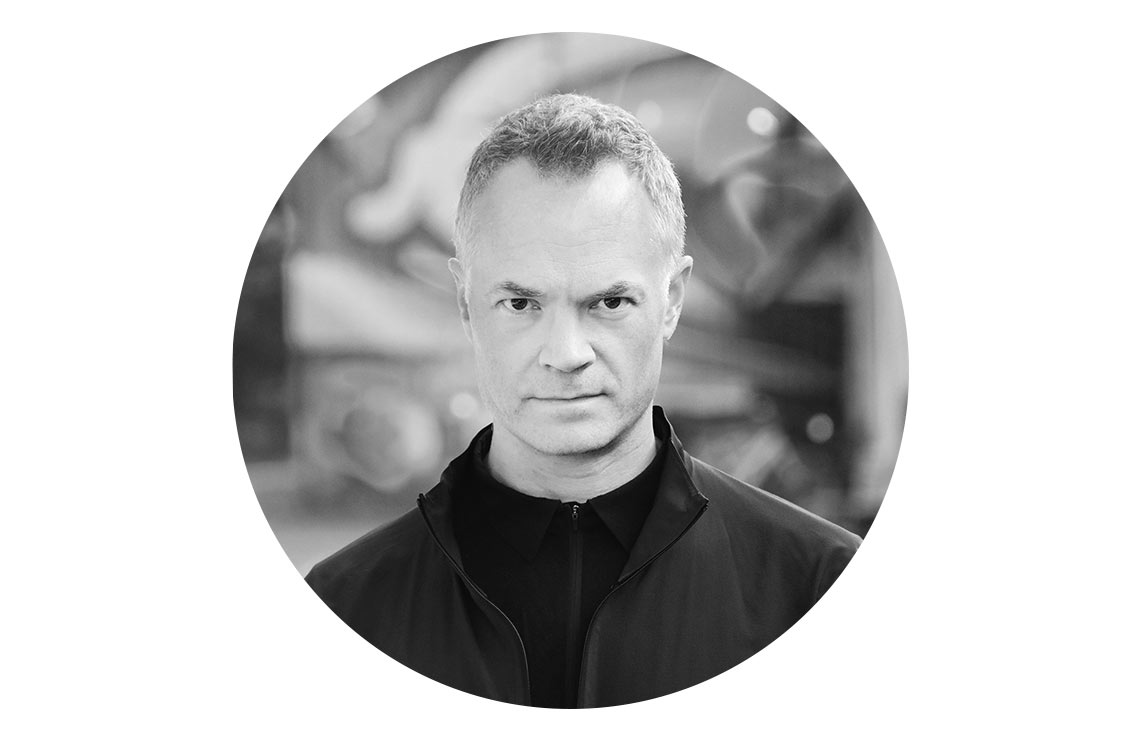
Sam Sundberg
Freelance writer, Svenska Dagbladet
Future trends for regulating the digital economy

Future trends for regulating the digital economy
Today we live in a very different world than we did just a few years ago. Everything has changed: the geopolitical landscape, the energy market and the cost of living. What has also changed is the view on regulating the Internet.
Some years ago, most politicians in the Nordics believed that the Internet should be free of rules and that a liberal regime was the only true guardian of innovation. Tech companies should not be liable for the content on their platforms and big tech should be able to grow by acquiring start-ups.
The pendulum has now swung to the other side, and in 2022, we see overwhelming support from Nordic decision-makers for the EU landmark regulations over the digital landscape, namely the Digital Services Act (DSA) and the Digital Markets Act (DMA).
Both regulations were adopted by the EU in summer 2022, and they will become reality by early 2024, at the latest. These instruments will have a huge impact on the way platforms deal with liability for illegal content, as well as how big tech companies should deal with their business users. The guiding principles for the new regulations are focused on creating fair and transparent rules that level the competition in the market and protect users and consumers from unfair commercial practices.
The current EU Commission is now halfway through its mandate and has already achieved a lot by means of proposing new digital regulation and becoming a force against the big tech companies. The Commission has set up several goals for 2030 related to increasing tech talent and the number of European unicorns, but they still have a long way to go to meet their goals.
But while the EU wants to boost the European digital economy, it also wants to create a safe internet based on European values. This is a tricky balancing act between those who want liberal rules that allow for innovation and increased global competition, and those who want heavy regulation that protects the consumers of digital services.
The EU’s objective can be summarised in two words: values and sovereignty. Or in the words of Commission president Ursula Von der Leyen: “Digital sovereignty is not just an economic concept. We are a Union of values. One of the great questions is: How can we preserve and promote our values in a digitised world?”
Recent global events have undoubtedly strengthened the belief among EU policymakers that the EU needs to be its own strong force and promote a distinct ‘third way’ of regulating the digital economy, somewhere in between USA’s ‘laissez-faire’ approach and Chinese authoritarianism.
This will – and has already – led to more regulatory oversight and enforcement powers at the EU level, making Brussels an increasingly important hub of tech regulation. This centralisation will make the European Commission a bigger interventionist player in the digital economy, not only by proposing new legislation but also by monitoring and ensuring compliance, which will take responsibility away from national authorities and make the rules even more harmonised across the EU.
Based on this new landscape, there are four major regulatory trends that will set the stage for the coming Internet rule book.
Safeguarding EU values
This EU Commission is much more political and principals-based than previous Commissions. It has taken the fight with the big tech, at the urging of France, but it is also taking a political stance against countries such as Poland and Hungary that are an increasing source of irritation to the Commission and other Member States with their populistic and nationalistic agenda.
As part of this battle, the Commission wants to protect the European value of freedom of expression, enshrined in the EU Charter of Fundamental Rights, by introducing a proposal that aims to protect the safety of journalists and the independence of newsrooms from any external influence, such as states, owners and platforms.
This proposal will be much debated, as regulating the media is a sensitive issue that typically is left at the national level. The fact that the EU Commission is considering a proposal to regulate media on EU level shows that it will do anything to protect the values that it holds dear. But it will be an uphill battle to defend this proposal against member states and media companies that oppose any regulation of freedom of expression beyond the national level.
Protecting consumers, minors and privacy
One of the most discussed and contested issues in digital regulation is the use of personal data for targeted advertising. Many EU decision-makers are frustrated with the slow and inefficient enforcement of the General Data Protection Regulation (GDPR), and the need for a targeted revision of the rules is under discussion. The DSA and the DMA have already included specific rules to ban targeted advertising directed towards minors and stricter consent rules for digital gatekeepers, but there is a clear political push to do more to protect privacy.
We also see a continued push from EU institutions towards greater transparency regarding the use of algorithms, with the aim to ensure that people are empowered and informed about them. And similarly, we expect some moves to regulate the use of so-called ‘dark patterns’ and platform designs that are perceived to manipulate and steer user choice and inhibit freedom of choice online.
Fostering EU innovation
The European Commission will propose a series of legislative measures to strengthen the EU’s position as a hub for emerging technology innovation. This is expected to include a review of the regulatory definitions of ‘start-ups’ and ‘scale-ups’ in 2023, intended to promote the emergence and success of EU technology companies. On the one hand, these measures are an attempt to make it easier to create new digital services, through a common EU digital identity and a review of EU competition policy, ensuring that competition instruments (merger control, market definitions and State aid control) are fit-for-purpose in a fair and balanced digital market. On the other hand, the EU will also look at regulating new technologies.
One example is the AI Act that is currently under discussion, in which the EU aims to regulate a technology that is still developing. The objective is to scrutinise certain AI technologies that can be seen as high-risk, such as facial recognition. But some are also of the opinion that AI used in newsrooms, such as bots and computer-created images, should be seen as high-risk AI, as the content may not be trustworthy and therefore in need of heavy regulation.
Promoting a circular economy
The EU’s ambition to be climate-neutral by 2050 remains the guiding policy for the green transition, which has also impacted digital regulation. The EU Commission has adopted a package of proposals for the circular economy, empowering consumers in the green transition and making sustainable products the norm.
A key proposal on Ecodesign for Sustainable Products Regulation (ESPR) introduces (among other things) a digital product passport for new products, as well as certain requirements for online marketplaces.
The EU will also propose a regulation on Right to Repair this autumn that will require products to be repairable and, as a result, prolong the average product lifetime.
At the same time, there is enormous political pressure to increase product liability of online marketplaces, which could include liability for green claims of products.
Schibsted’s voice
Schibsted is a leading voice and will actively contribute to a regulatory landscape that allows for the innovation of state-of-the art digital products and services in the Nordic market. We will focus on calling for effective implementation and enforcement of EU regulations, such as the DSA and the DMA, and ensuring balanced regulation for online marketplaces, as well as the continued ability to use data to create of relevant products and services for our users. We will defend editorial independence from external influence and the Nordic self-regulatory system in the media. And we will support efforts to promote sustainable products and circular consumption in Europe.

Petra Wikström
Director of Public Policy
Years in Schibsted: 4
A world divided

A world divided
In many ways, journalism is at a peak: media reaches more digital readers, viewers, and listeners than ever before, and digital revenues have reached record levels. Still, Ola Stenberg, Product Director at VG, is concerned. The problem: the digital-native generations expect completely different things from media.
Why are the new needs from younger generations a problem? Because what we, as a media company, did in the last decades will not work in the years to come. Our success with creating habits for our users will not continue without us rethinking pretty much everything.
Our average user, male 50, was born in the 70s. Those users remember the walk from home to the local store to pick up the newspaper from the stand in the morning. They remember linear television, the rise of cable TV and that we actually rented a video cassette player for 24 hours at the rental store. They remember when Steve Jobs told the world not only about a smart phone where the keyboard was replaced with a touch screen, but that it was a phone with a music player! And a breakthrough internet communications device! We were all amazed.
Today, it is a story that young people do not even understand. A music player?
Unknown history
What’s good enough for him (50) is not even close to good enough for her (20). For him everything just became better when the internet, desktop and smartphones evolved. To her, born and raised in a digital world, almost everything he considers radical innovation is unknown history.
“Why are you saying flat screen, dad?” or “why are you talking about buying a new smart TV?”. Have you ever gotten that question from your kids? I get them. They think my language is strange. I understand why. For me that very flat TV is still amazing because I remember the big ones. But my kids have never seen anything else, and they are not particularly impressed by the smartness of remote controls or a screen you can’t even touch or talk to.
I also struggle to get my son to pick up the phone when I call. Why not send a text or voice message on snap? Or you could ask a 20-year-old today how many numbers they have saved in their contact list.
These are our new users.
They are Gen Z, gen Alpha or the TikTok-generation. Just consider TikTok and their position for a second: 1.2 billion active monthly users spend an average of 52 minutes per day in the app. They are crushing other social media platforms on engagement rate, and I don’t even want to think about TikTok engagement metrics vs traditional media.
Will we continue to grow?
While this is enfolding, direct traffic on VG is still great. We still hold the position as the number one news source in Norway. We’ve pretty much been growing on all metrics since we went online in 1995. The big question: will this continue?
We were successful in shifting our users’ habits from physical newspapers to news sites, but what lies ahead of us might be an entirely different story. User habits are changing dramatically and faster than ever before. We will have to go the extra mile to keep up this time.
I believe we are in our biggest shift so far. A shift in users. And mindset.
The prospect of facing a total rethink keeps me up at night. Will we be fine with adjusting and iterating over time? I don’t have the answer yet, other than the fact that we invest heavily in understanding our new users.
First, we need to understand the fact that the world ahead is divided.
They live their lives online
When we (old people) talk about entering a web site or the internet, our new users live their lives online. It’s a natural part of their life, their habits. It’s basically a cornerstone in their social life, in the way they celebrate birthdays, shop, learn, experience, entertain or being entertained – how they connect with the world.
And the ones shaping their habits are not news sites like VG or others. That is done by gaming platforms, chats everywhere and social platforms like TikTok. A video and visually driven experience where short, snappy content – served to you by addictive algorithms – all connected by who you follow and what your friends like and share. That is not what the media serves today. You can argue that journalism is something different. Our ethical standards are different, and we can’t be fully personalised.
At the same time, we know through years of user research that what our competitors and especially social media platforms manage to do well – we fail at. We also know by research that the young users will find us when the news story is big enough. But what about all the other days? Again, we struggle with daily habits and loyalty. So we need to step up our game.
Understanding a new social life
To turn headaches into success we must understand our new users and their digital lives. TikTok is one thing but I hear parents talk about hours of gaming or too much screen time being a problem. It might be for some but we also need to understand that gaming, watching TikTok for an hour or chatting with friends is more than playing a game or wasting time on a screen. It’s a totally normal social life for young people.
My point is this: the new era is about users with a different mindset and ways of living their lives – which all feel unnatural for a 40-year-old like me. I still don’t talk to my phone, while my kids try to talk to every device there is. They give me that strange look if I ask stupid questions of why they want to spend 100 dollars on a pair of virtual sneakers. Yes, Nike recently bought a company making virtual shoes and it’s already a multi-million-dollar industry.
We need to hire them
We need to listen to this generation. They will probably not win an A/B test on our site today but they will for sure be the ones to serve in the future. And our big challenge is to serve them. Otherwise, we should expect to slowly drive ourselves out of business.
One way to understand the job to be done, is to continue our investment in user research and listening to the users we have, and those we don’t have. But I believe there is one more thing we have to do: Hire them.
If you do that, you get the mindset in-house. We need to get the people who can dream it, and then build it, too. Young people today are more skilled than ever. They grew up with the internet and a never-ending opportunity of learning by themselves – online.
And then, hiring is one thing – to lead is another. Some years back I could go into most rooms and bring value to the table. Now, I try to lead with this in mind: everyone in the team is there because they are better than me. And you must let the quieter voices come through. The youngest journalist or the apprentice have mindsets and skills that are crucial for your future success. But because they are fresh hires, they may not know it. So, tell them, every day and keep the door open to the management and board room and let them speak their minds.
She (20) is our key to the future.

Ola Stenberg
Product Director, VG
Years in Schibsted: 18
Schibsted projects that bridge the gap
Although there is a generation gap in news consumption there are many initiatives to reach young people at Schibsted’s newspapers today. Here are a few successful examples – and don’t miss the story about IN/LAB on the next page.

Nathalie Mark is Future Editor at Aftonbladet. She works with the editorial teams on how to attract young audiences with news stories, helps developing formats for social media platforms and she is always on the lookout for future news media- and tech trends. Today Aftonbladet has a thriving TikTok account with over 100,000 subscribers and four different Snap Shows with several 100,000 unique viewers each week – starting from zero when Nathalie started in January 2022.

VG has a team called Z, that is the frontrunner for “young content” – they also handle the social media production, distribution and strategies. In 2016 VG partnered with Snapchat and started to build channels for news and entertainment on their Discover-feed. This has become a huge success with 900,000 users subscribing for VG content. The content produced for Snapchat, TikTok and Instagram are also used on VG.no and experiences from the social platforms are shared with the newsroom

To explain news to kids, both Aftenposten and Svenska Dagbladet have newspapers for children – Aftenposten Junior and SvD Junior. Aftenposten also has a school project where teachers can use the digital content in the classrooms. This content was also the starting point to make news from Aftenposten accessible to all – through a synthetic voice.
Meet our people: "I care for our contribution to society.”

"I care for our contribution to society"
“Talent is the foundation of success, so our people are, without a doubt, our most important asset,” says Grethe Malkmus, Schibsted’s new Head of People and Communication.
Grethe joined the company six years ago and has held a number of roles over the years, including Director of People at VG and in News Media. This has given her insight into Schibsted’s different brands and diverse cultures, as well as an understanding of the opportunities and challenges in an evolving employment landscape.
“It’s never been more important, or more challenging, to attract, retain and develop the talented employees we need in order to fulfil our purpose of empowering people and serving society.”
Economic uncertainty, increasing global competition and changing attitudes to work means that there is a need to focus on multiple fronts, like identifying the right talents and making sure to give them what they need, she explains.
“It’s a tough task, no doubt, but I can’t think of a better-placed organisation in our markets to address this.”
She mentions the learning opportunities within an inclusive workplace and career opportunities across the businesses as great options to attract and retain talents.
“In my heart, I truly care for the success of Schibsted and our contribution to society. Every time I pop into the daily all-hands in our media houses and experience the enthusiastic debate around journalism, I’m always reminded of our purpose. I am really proud that what we do in our team has an impact on that larger purpose.”
Grethe Malkmus, EVP, Chief People and Communication Office
Monika Gustavsson and Karin Liander
They make the office feel like home
In Stockholm, around 20 Schibsted companies have their offices in the same building. The different spaces are designed with each company’s need and identity in mind – much thanks to Monika Gustavsson and Karin Nyberg Liander.
Monika and Karin belong to the facility team and take care of all surfaces to make sure everyone has the space and furniture they need.
“When we started, there were desks in straight rows, and people were disturbed without understanding why. Now we are looking into each company’s needs and then we are trying to create a nice, homely feeling,” Karin explains.
And many changes have been made lately, not least because people are working from home and don’t have fixed places at the office. New kinds of spaces are needed and the leading word is an “activity-based office”.
“Minor details matter and we try not to skip those little extra things, even when the budget is tight,” says Monika.
Another change is that now most people in the building know who is responsible for the work environment. Karin and Monika move around and talk to people.
“The best thing is that our job varies a lot,” says Monika.
“And that we get to be creative and make people feel good while being here,” Karin adds.
Monika Gustavsson, Karin Liander, Workspace Managers, Stockholm
Years in Schibsted: 5
Agnieszka Lasyk
Trust and safety make teams happy
Agnieszka Lasyk is into happy teams. She’s working as a director of engineering, based in Schibsted’s office in Krakow, Poland, and she is certain that a safe working environment is crucial for success at work.
“I really want to be part of creating the best environment possible to give employees the best opportunities to excel.”
Her interest is rooted in her former studies. She has a degree in sociology, and as a manager in Schibsted, she drew on her learnings and experiences on building happy teams in order to improve performance, on her own initiative. And she started off by spreading the message with a presentation to tech leaders, about three years ago.
“At first, I was a bit reluctant, thinking that this is common knowledge. But then I was asked to hold presentations in different teams and forums, so apparently, it’s not that obvious.”
Her main message is that happy teams perform better – and that trust and psychological safety are the foundations for building them. And that managers and leaders need to act as role models.
“Managers should make their whole team understand that they can come as they are and work to foster an inclusive and transparent culture.”
Agnieszka Lasyk, Director of Engineering, Schibsted Marketing Services
Years in Schibsted: 9
Influencers might need new skills to survive

Influencers might need new skills to survive
Social media is fundamentally changing. Algorithms focusing on our interests will make us more passive, and influencers are in for a challenge.
We have now entered the third era of social media algorithms. This new development has major implications for some of the tech world’s leading players and for our personal well-being, and is one of the trends that will affect us most in the coming years.
Time is money
The first era of algorithms was simple by today’s standards. We as users decided for ourselves what interested us and which accounts we would follow. Then posts from those accounts began appearing in our feeds in chronological order.
During the second era they were shuffled up so that posts from accounts we already followed were mixed with posts our friends commented on and with accounts that resembled the ones we already followed.
Now we have entered the third era, where we don’t even need to tell social media what we’re interested in. It doesn’t matter which accounts we follow. Recommendation algorithms are now becoming so accurate that they always give us what we want without us having to actively tell them what that is.
Just like before, it’s all about consuming as much user time as possible. Time is money or, to put it more precisely, the more companies can hold our attention, the more advertising they can sell. They earn more money – and therefore more value – for their shareholders.
This era also goes to show that we ourselves don’t know what we want. The companies can figure that out for themselves and then get us to spend our valuable time on them.
The principle isn’t new, but the amount of money being invested in developing it is. And it’s TikTok that’s leading the way. Its parent company Bytedance spent SEK 163 billion on research and development in 2021 alone. Developing a market-leading algorithm is expensive.
Algorithm development is also transforming how we use social media. Previously, users would interact with friends and acquaintances and share their everyday life with them through photos and status updates. The apps served as extensions of our social lives.
Now the focus has been shifted to entertainment. Here, too, TikTok is the one driving the change and is sitting in the driver’s seat. On its platform, it’s not who you follow that determines what content you view, but rather the type of content you like. The social function has been peeled away. And its competitors are following suit.
Video is the new gold
For the social media giants, video is the new gold. Instagram and Facebook are fighting to get Reels, their TikTok clone, to take off. YouTube is investing heavily in the very similar Shorts format. It’s about reversing a trend where, for example, Instagram and Facebook owner Meta is seeing its first ever decline in user growth and revenues.
This trend is also redrawing the map for influencers who enjoyed huge success and earned large amounts of money on those platforms. For many years now they could sit back and enjoy growing audiences and engagement, which guarantees collaborating advertisers a certain amount of exposure. But what happens when followers cease to be so important?
The fact that TikTok’s algorithm is based on interest rather than audience size means that anyone can go viral. This summer Instagram tried to roll out similar changes in its algorithm but faced fierce pushback from the most established influencers, from Kim Kardashian to Swedish Rebecca Stella. In SvD, one influencer described the new reality on the platform as “Russian roulette”.
Instagram had to admit they were wrong and withdrew it, but it’s probably only a matter of time before the new algorithm returns. Instagram simply can’t afford not to keep up with users’ changing behaviour, and has declared Reels as the future for the platform.
Influencers need to start over
For many of the leading influencers around the world, this means they will have to start over, learning new tricks and understanding user behaviour on a new platform. Those who built careers on generating engagement by posting nice pictures will suddenly have to learn how to make videos and create a different type of content. Not everyone will survive the transition,
And perhaps that’s the natural process of succession; after all, it’s normal in most industries for new skills to emerge and for old ones to die out, and for companies to change their strategies.
So how are the platforms’ new, advanced recommendation algorithms affecting us users? We’re becoming less active and more passive. We’re using the platforms less and less for keeping in touch with friends and acquaintances. And instead we passively scroll through infinite feeds over which we have no control. One aspect of it is how it makes us feel.
Research on psychological well-being and social media use is still in its infancy, and it’s very difficult to say anything about cause and effect, but there are some indications – and they’re pointing in the same direction. A study conducted in the United States found that individuals who passively consume social media content run a 33% higher risk of developing symptoms of depression, while the same risk for active users is 15%. A study conducted in Iceland on more than 10,000 adolescents found that passive consumption correlated negatively with anxiety and symptoms of depression. The same correlation was not found in active users, even after controlling for other factors.
As already mentioned, the relationship between cause and effect is not easy to establish, but we can be pretty certain that development of the algorithms has more to do with enriching the social media giants’ shareholders than it has with making life better for us users.

Sophia Sinclair
Tech Reporter SvD Näringsliv
Years in Schibsted: 4
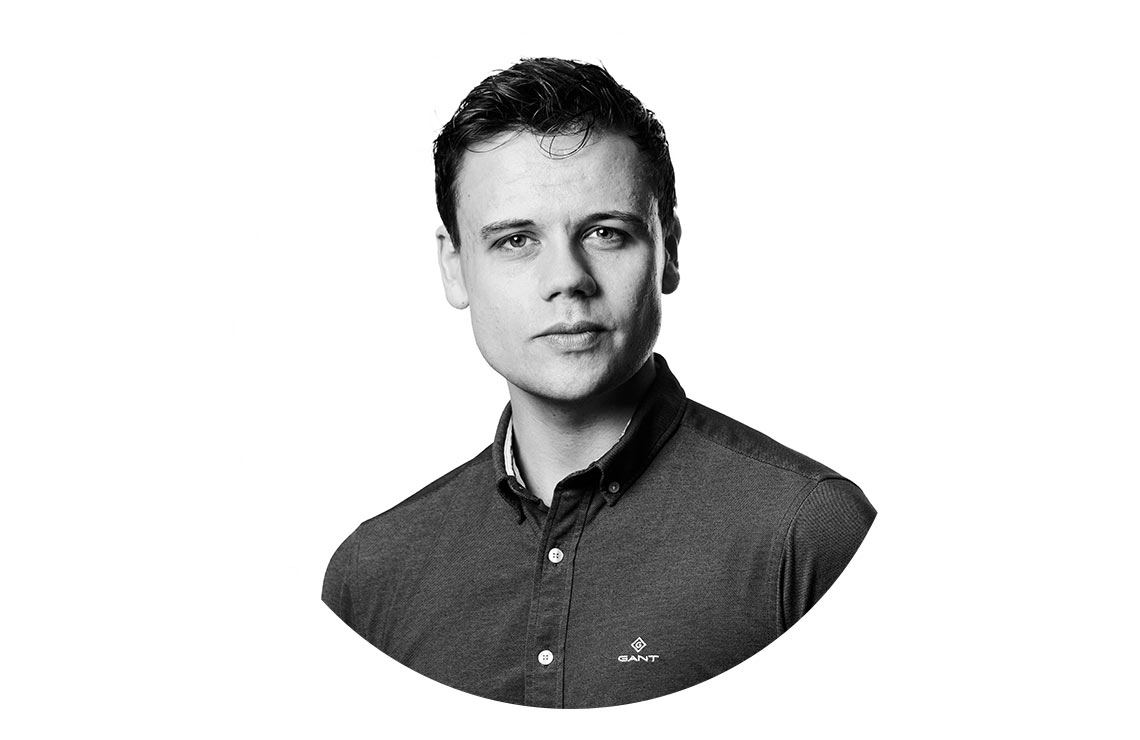
Henning Eklund
Tech Reporter SvD Näringsliv
Years in Schibsted: 2
















